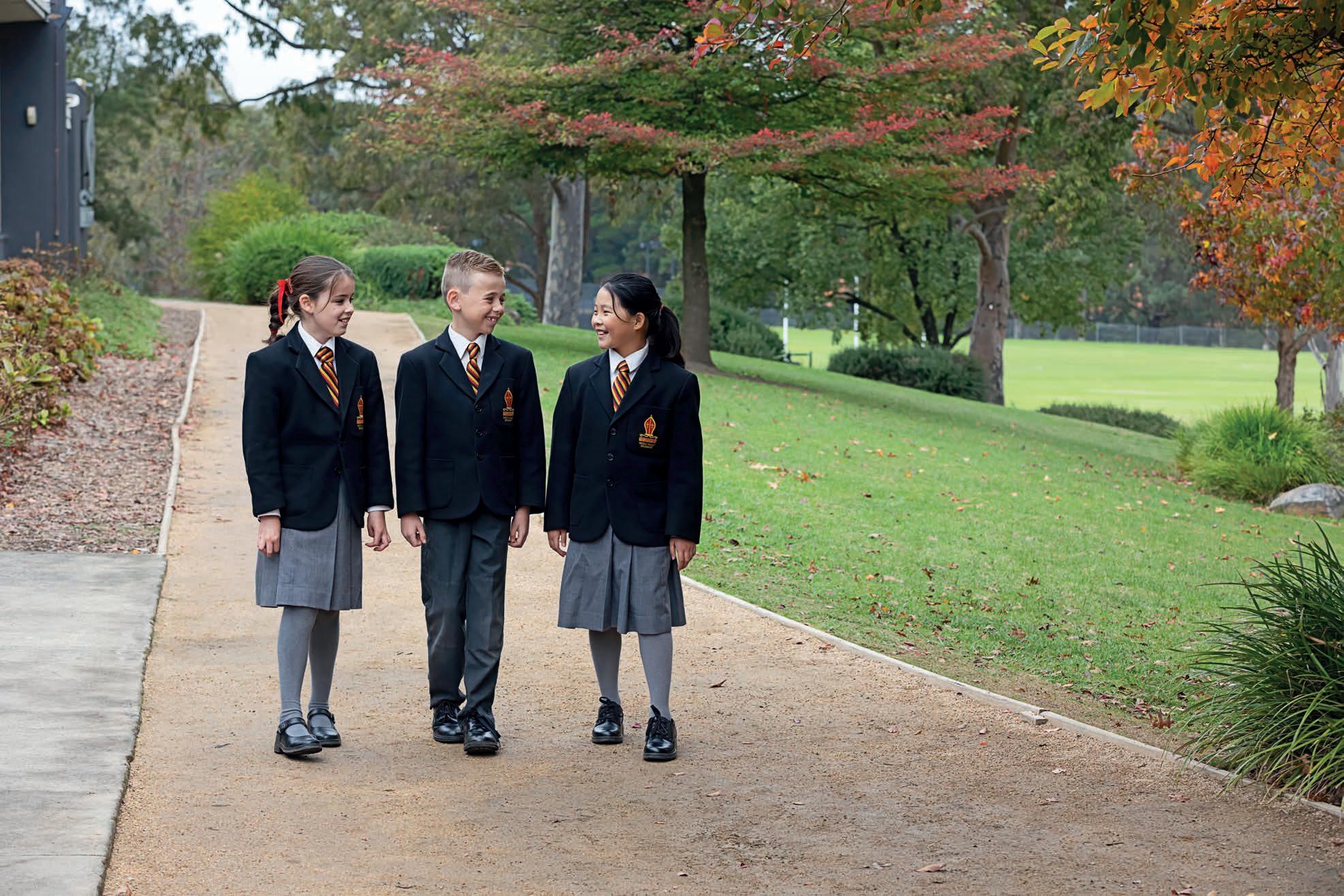

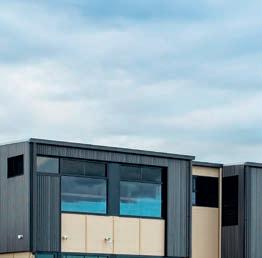
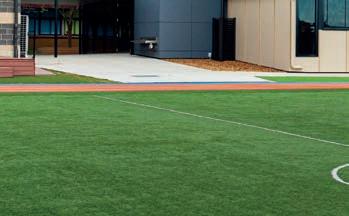

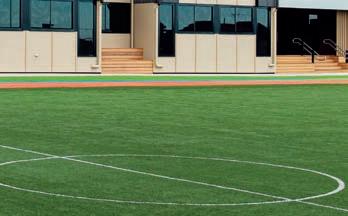











Education is a living, breathing ecosystem of human potential, and this edition captures the heartbeat of transformation happening in classrooms across Australia.
Our journey through contemporary education reveals passionate educators like Mr Duncan McBain, Junior School Mathematics Coordinator at Methodist Ladies’ College, who are not just teaching, but reimagining learning itself.

Mathematics stands at the forefront of this educational revolution. The Grattan Institute's recent report has illuminated critical gaps in educational approaches, challenging educators and policymakers to reconsider how teachers and students are supported in mathematical learning.
Teachers like Mr McBain understand that education is not about transferring information but igniting curiosity. Whether it's mathematical literacy, technological skills, or holistic personal development, the focus is shifting to active engagement.

Early intervention remains crucial. Screening tools and evidence-based strategies are creating safety nets, identifying potential challenges before they become insurmountable. South Australia is leading the charge with ensuring maths improvements were included in the Better and airer chools greement and is the first state in the country to have a literacy and numeracy check for Year 1 students.
Looking beyond maths, it can be argued that technology is no longer a supplementary tool, but an integral part of educational strategy. In this issue, education expert and best-selling author Mr Brett Salakas provides a preview of his keynote address at this year’s National Education Summit in Melbourne. In his own words, AI is moving fast, and education can’t afford to drift aimlessly while the world changes around us. He believes schools need to set a course that’s strategic, intentional, and human-centred.
Chief Operating Officer: Christine Clancy christine.clancy@primecreative.com.au
Publisher: Sarah Baker sarah.baker@primecreative.com.au
Managing Editor: Myles Hume myles.hume@primecreative.com.au
Editor: Rhiannon Bowman rhiannon.bowman@primecreative.com.au
Art Director: Michelle Weston
Media Bookings and Advertising: Kylie Nothrop kylie.nothrop@primecreative.com.au 0422 046 299
Client Success Manager: Sabrina Zor
In an era of educational transformation, teachers are also seeking more meaningful, collaborative professional development. Teachers are no longer isolated practitioners, but members of a dynamic, interconnected professional community. Best practices are shared, strategies refined, and collective wisdom becomes our greatest resource.
Our feature explores Hambledon Public School's journey with Quality Teaching Rounds, revealing how peer observation can reinvigorate teaching practices, support early career educators, and ultimately improve student outcomes. It's a testament to the power of collaborative learning and the potential for educators to continuously evolve and inspire.
As Mr McBain says: "So many principals I've worked with have sought peer observation, and the best professional development you're going to get is learning from another teacher."
As we navigate this complex educational landscape, one thing becomes clear: the most powerful technology, the most sophisticated curriculum, cannot replace the magic that happens when a passionate educator connects with a curious mind.
Happy reading!

Rhiannon Bowman Editor – Education Matters rhiannon.bowman@primecreative.com.au www.educationmattersmag.com.au
Education Matters is a division of Prime Creative Media Pty. Ltd.
379 Docklands Dr, Docklands, VIC Ph: (+61 3) 9690 8766
Subscriptions
Education Matters is available by subscription from the publisher. The rights of refusal are reserved by the publisher. Ph: (+61 3) 9690 8766 E: subscriptions@primecreative.com.au
Articles
All articles submitted for publication become the property of the publisher. We reserve the right to adjust any article to conform with the magazine format.
Cover Image Yarra Valley Grammar




Copyright Education Matters is owned by Prime Creative Media Pty. Ltd. and published by John Murphy. All material in Education Matters is copyright and no part may be reproduced or copied in any form or by any means (graphic, electronic, or mechanical including information retrieval systems) without the written permission of the publisher. The Editor welcomes contributions but reserves the right to accept or reject any material. While every effort has been made to ensure the accuracy of information, Prime Creative Media will not accept responsibility for errors or omissions or for any consequences arising from information published. The opinions of the magazine are not necessarily the opinions of, or endorsed by the publisher unless otherwise stated. All photographs of schools (including students) depicted in feature articles and advertisements throughout this magazine have been supplied to the publisher (and approved) by the contributing school. All material supplied by schools is done so with the understanding that such images will be published in Education Matters and may also appear on the our website: www.educationmattersmag.com.au.

26 EDUtech ow to ma imisevalueat ustralia’slargest festivalofeducation.
29 Smart school security dvancedenvironmentalsensorscannow detectvapinginschools.
30 Simplifying school management ow a tech savvyteacheristransforming schoolsystemswith a user friendlysolution.
32 STEM on show ward winning del artisnowavailableat uestaconand cienceworks.
34 Getting to the heart of the matter opfor eart idsissetfor a ma orlaunch withnew urriculum alignedresources.
36 Doing the rounds rofessionaldevelopmentthatprovesthe powerofobservation.
38 National Education Summit reeseminarsin elbournedrawon speakers'vaste perience.
39 Pride of place modularconstructionat a elbourne primaryschoolshowcases leetwood ustralia’se pertiseinintegrateddesign.
40 A thirst for smart design owcanstudentsrefilltheirdrinkbottles fromoutdatedtroughsandfountains neschoolfound a solution.
42 That’s the look hoiceofmaterialscanmakeorbreak anoutdoorplayspace.
43 Make your mark refillablewhiteboardmarkerthat doesn’tfadeis a win win.
44 Getting into the spirit henstrategicallyreimagined, ouse systemshavethepotential to transform studentengagement.
46 Knowing what schools need necompanyunderstandshow to create school testedtough’productsthatare alsocost effective.
47 Accessible design meets stylish durability eltonIndustries'revolutionary voca rangetransformsoutdoorseating.
49 Expert Contributors ur pert ontributorsectionshares opinionsofthoughtleadersineducation.





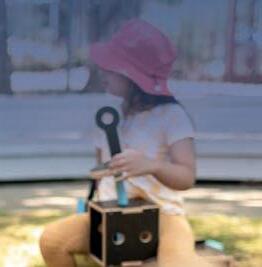

Spend 20x less for something better! .
Nüdel Kart does things a playground never could...
Nüdel Kart changes every day for brand-new play and learning experiences for decades.
Nüdel Kart moves inside on wet weather days so you never have chaotic lunchtime ever again.
Supports STEM,creativity and the whole curriculum.

Discover how schools are saving thousands –and giving students more.
Visit www.nudelkart.com to book a demo.
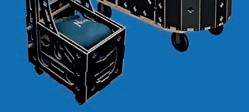
New data from the Primary English Teaching Association Australia (PETAA) reveals that Australian teachers are highly knowledgeable, confident in their practice, and evidence aligned in the way they teach reading – but they overwhelmingly call for stronger and more consistent system-level support.
In PETAA’s inaugural National Teaching of Reading Survey 2024, 500 Australian teachers shared how they teach reading in the primary years, providing new insight into instructional practices, materials, and professional learning from classrooms across the country.
The report confirms that most teachers are e plicitly implementing the five key components of reading instruction phonics, phonemic awareness, fluency, vocabulary, and comprehension , on a daily basis.
But the findings also e pose systemic gaps. nly half of all teachers report working within a coherent whole-school approach to reading, and most prefer teacher-created or third-party materials to department-provided resources.
However, respondents also indicate a strong desire for systemlevel support targeted at professional learning and provision of time for planning and collaboration with peers and mentors.
“This report puts teacher voice back at the heart of the national
The report confirms that most teachers are explicitly implementing the five key components of reading instruction on a daily basis.
education conversation and their message is clear: Australian teachers are teaching reading well – but they are doing it under pressure,” said Dr Helen Adam, PETAA Board President and Associate Professor and Researcher at Edith Cowan University.
“It’s time to move the conversation from questioning teacher knowledge about the teaching of reading, towards providing the system level supports they are calling for and need to ensure highquality, consistent reading instruction in every classroom at every school across Australia.”
•Teachers effectively adjust instructional focus according to developmental needs, transitioning from largely code-based emphases in early years to greater comprehension focus in middle and upper primary.
• per cent of early years teachers cover the five key pillars of reading instruction on a daily basis.

•Differentiation remains the biggest challenge, with time, resources and wide ability ranges as key barriers facing teachers.
•Teachers want greater system level support for professional learning with many reporting they currently turn to online blogs and
•Only 2.6 per cent of teachers report daily professional dialogue with colleagues about reading instruction, and only 35 per cent believe their school has a whole-school approach to the teaching
The survey captures teacher voice amid national debates about reading reform which place professional expertise at the centre of the
“This research highlights that teachers are confidently combining explicit instruction with professional judgement and differentiated practice,” said Ms Megan Edwards, PETAA CEO.
“But they need support. As primary educators’ national membership association for English and literacy instruction, PETAA’s ongoing relationship with educators allows for vital, and consistent, whole-school upskilling through access to evidence-backed resources and training that connect research to practice. In 2025, this is more
PETAA is calling on education departments, systems and
•Support schools to implement consistent, evidence-informed whole-school approaches to reading through access to quality professional learning – and the time in which to complete it
•Invest in time and resources for teachers to collaborate,
•Fund diverse classroom libraries and resources to meet the needs
The full report and a downloadable briefing summary are available at https://petaa.edu.au/w/About/reading_survey.aspx. EM



















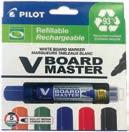
































New resources explaining how students learn, and the research behind this, have been released by the Australian Education Research Organisation (AERO).
The four explainers shine a light on the hidden processes behind effective learning, providing school leaders and teachers with insights into how students learn, process and retain information. These insights can support teachers in selecting and applying the teaching practices that align best with how students learn.
The explainers cover the following areas:
•Attention and focus – Students are actively engaged when learning.
•Knowledge and memory – Learning is a change in long-term memory.
•Retention and recall – Students process limited amounts of new information.
•Mastery and application – Students develop and demonstrate mastery of their learning.
To develop and demonstrate mastery – students must go through important cognitive stages in memory function that allow for acquiring, retaining, retrieving and consolidating of learning.
“Our brains are truly marvellous things,” Dr Jenny Donovan, CEO of AERO, said.
“There is no known limit to how much knowledge we can store


in our long-term memory, but there is a limit to how much new information we can manage at any one time.
“When we learn, changes take place in long-term memory – but to achieve this learning requires sustained focus and attention, practice, measured amounts of new information combined with the right amount of scaffolding and support for students as they move towards mastery and application.”
Dr Donovan said understanding exactly how their students learn can help teachers to maximise learning within the classroom environment.
“These practical, evidenced-based explainers explain the pathways from short-term to long-term memory, that build the mental models students need to unlock their capacity for higher-order thinking and a huge array of critical and creative applications.”
AERO’s work on how students learn best connects research on the learning process with practical teaching implications. EM
Data analysis from KPMG Australia has revealed that early childcare education is one of Australia's fastest growing occupations between 2014 and 2024.
According to KPMG economists, childcare and early learning has experienced large increases as more women participate in the workforce requiring these services. The number of workers in early childhood and childcare has risen from 168,500 in 2014, to 257,000 in 2024, representing a 52.5 per cent growth rate. The number of school teachers has also grown, from 311,400 in 2014 to 384,800 in 2024, representing a 23.6 per cent growth rate.
“The surge in care economy occupations reflects a obs market responding to Australia’s changing demographics,” said KPMG Urban Economist, Mr Terry Rawnsley.
“As the older Baby Boomers enter their late 70’s and early 80’s the need to rapidly expand aged care and related health services grows stronger. Meanwhile, increased participation of women in the workforce has meant the demand for childcare has similarly increased

over the last decade. We are already seeing governments invest heavily in the aged care, disability support, and childcare sectors to meet future expected demand.”
KPMG’s analysis comes as the Victorian State Government announces it is set to open 14 new Early Learning centres in 2026.
Minister for Children Ms Lizzie Blandthorn visited the future site of Early Learning Victoria Noble Park in April to mark the start of construction and announce that builders have been appointed for all 14 new centres.

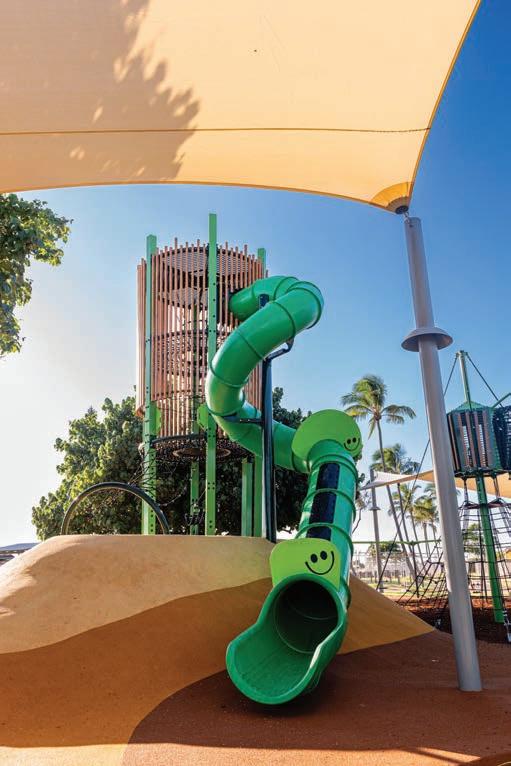
Ms Blandthorn said the new centres will charge fees below local market rates, making childcare more affordable for families. Each centre will be located on or near a local school, easing the double drop-off and making the transition from kinder to school simpler for children and families.
With these additions, a total of 18 government-owned and operated Early Learning Victoria centres will be open by 2026 – providing more than 1,800 licensed places for children across the state. EM











A new numeracy guarantee that will focus on upskilling teachers will be introduced across South Australia in a further bid to lift maths results.
The guarantee, which follows South Australia’s introduction of a numeracy check for Year 1s in 2026, is part of improvement reforms that make up part of the recently signed Gonski agreement.
It comes as the South Australian government has committed to increase public school funding by more than $300 million, following the Commonwealth Government’s $1.3 billion increase in funding announced in January, taking the total increase in public school funding to $1.25 billion over the next 10 years.
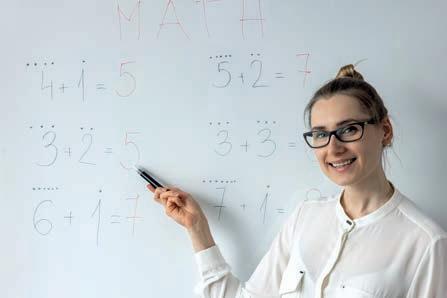
The Federal Government will raise its public schools funding from 20 per cent to 25 per cent of the Schooling Resource Standard (SRS) and the South Australian government will continue to contribute an overall share of 75 per cent of the SRS for public schools.
This Bilateral Agreement supports the goals of the Better and Fairer Schools Agreement – Full and Fair Funding 2025 – 2034, signed in January. It marks a major change to how public schools in South Australia will be funded.
This agreement will guarantee that South Australia’s public schools are fully funded under the Gonski model, reaching 100 per cent of the Schooling Resource Standard (SRS).
As part of the agreement, there are key improvement measures that will be focused on, to lift results and ensure supports for students are targeted.
A major change to South Australia will be the introduction of the numeracy guarantee.
South Australia led the charge with ensuring maths improvements were included in the agreement – following its numeracy check trial – and is the first state in the country to have a literacy and numeracy check for Year 1 students.
The state government will continue to build on this focus by introducing a numeracy guarantee that includes:
•Upskilling for all primary school maths curriculum leaders to drive whole-school maths improvement.
•A new academy to support all early career teachers in teaching maths more effectively.
•More professional learning for teachers in maths – starting at preschool and going across year levels.
•Free online numeracy resources for all parents to use with their children.
•An improved SA mathematics curriculum so students gain the mathematical knowledge and find oy in maths.
•Roll out the numeracy check for all Year 1s at public schools.
•The numeracy guarantee means all public school students having
The guarantee includes a new academy to support all early career teachers in teaching maths more e ectively.
access to a world-leading maths curriculum, with teachers better trained in teaching mathematics, and parents having the tools they need to best support their child with mathematics.
These efforts are aligned with the latest Grattan Institute report The Maths Guarantee, which calls for better teacher training, more support for schools to teach maths, and making improving maths a priority in all schools.
The historic Gonski agreement also furthers the goals of the South Australia Public Education Strategy, with equity and excellence, wellbeing, and a sustainable workforce as the priority reform areas to improve student results.
The additional funding is also tied to other reforms that will include supporting a strong and sustainable workforce through attraction and retention initiatives, training and mentorship opportunities.
Minister for Education Mr Blair Boyer said this agreement is not just for the current generation of public school students, but the next generation and the one after that.
“I’m proud of the work we have done to achieve this outcome, working in partnership with Australian Education Union, our professional associations and the Federal Government to make this possible. I spent many months negotiating with Federal Education Minister Jason Clare and I am grateful that his commitment to public schools has seen this incredible outcome for our students,” Mr Boyer said.
“ s a state, we identified early on that maths results were declining so we implemented the numeracy check to help with early intervention supports. I am pleased to see this Gonski agreement will also focus on numeracy for students right across the country, as we led the charge in this field.
“This commitment will allow us to focus on what we need to do to improve educational outcomes, including how we can better attract and retain our teaching workforce.
“Funding for our schools, and the education for our young people is critical – we cannot simply coast along with the bare minimum – and I’m proud that we now have an agreement in place to ensure that the supports are exactly where our students need them.” EM
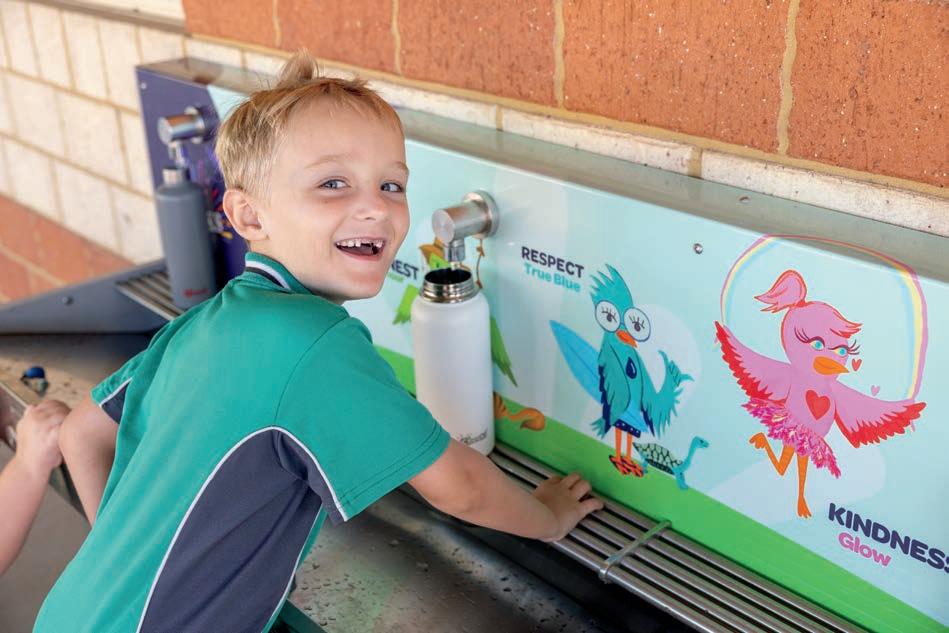



APPA President Angela Falkenberg reflects on the deep well of expertise, creativity, and emotional intelligence teachers bring to their work.
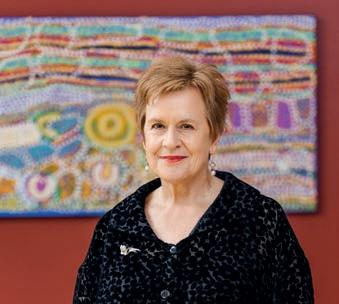


At the farewell gathering for South Australia’s Children’s Commissioner, a simple yet profound insight emerged, not from research papers or expert panels, but directly from the voices of thousands of children. When asked what they most want from the adults in their lives, two consistent hopes were shared:
To be recognised for what they are good at. •To be equipped with the skills to manage conflict and challenging relationships.
Beneath these hopes lies a clear roadmap for supporting every child to thrive. These are not optional extras or aspirational ideals. Belonging, strengths, and emotional capability form the foundation for learning, wellbeing, and lifelong success.
Belonging: the bedrock of resilience
Until a child feels they belong, they cannot fully engage or thrive.
Belonging is not about assimilation or seeking approval. It is about being seen, known, and valued for who one already is.
As Dr Brené Brown so aptly states, “True belonging doesn’t require you to change who you are; it requires you to be who you are.”
Imagine the transformative power of every student feeling confident to bring their authentic self into the classroom.
attend more regularly, behave more positively, achieve more highly, and demonstrate stronger emotional wellbeing.
Belonging is not peripheral. It is cultivated not only through policies, but through daily practices: meaningful conversations, moments of recognition, and sustained human connection. In a time of rising loneliness, schools can offer connection every single day.
Anchored in strengths
In a society preoccupied with ranking and comparison, children yearn for something far more human: to be recognised for the unique strengths they bring.
This recognition goes beyond academic scores or athletic ability, it includes kindness, creativity, persistence, humour, and the diverse ways young people perceive and shape the world.
As Fiorenza Rossini of The Belonging Project explains, “We are anchored by knowing ourselves, our uniqueness and strengths, and showing up in a way that honours that.”
Australian Primary Principals Association (APPA) President Angela Falkenberg has held senior school leadership positions across both primary and secondary schools and has extensive experience in the education of First Nations children. APPA provides a voice to more than 7,600 public, Catholic and independent primary school principals across the country.
sychologist r ndrew uller affirms that belonging is not a ‘soft’ concept, it is the cornerstone of resilience. And schools are uniquely positioned to foster it.
Yet the most recent PISA 2022 results indicate that many Australian students, particularly girls, regional students, and First Nations students, report a diminished sense of belonging at school. This has significant implications. Research consistently shows that when students feel connected, they
In challenging moments, conflict, exclusion, or self-doubt, knowing one’s strengths can serve as an anchor. In times of e clusion or conflict, when self doubt begins to take hold, a clear understanding of one’s capabilities and identity provides stability and sustains hope – hope that circumstances can improve, that resilience is possible, and that one’s presence has value.
This invites a crucial reflection for every educator:
•Do we know the strengths of the children in our care?
• o we reflect them back so clearly that the students can see them, too?
Strength-based environments cultivate agency, motivation, and pride. They communicate clearly: you are not a problem to be solved, you are a person becoming.
ig ing con ic
teaching the skills that matter No child wants to be excluded or to cause harm, yet misunderstandings, mistakes, and conflict are a natural part of life. The difference lies in whether children have the tools to respond constructively. Many children overestimate the potential fallout of conflict and underestimate their capacity to manage it. They need tools, not just rules.
elping children navigate difficulty is not a ‘nice-to-have’ addition to the curriculum, it is at the heart of education. It requires teaching and modelling skills such as:
•Regulating emotions
•Calming oneself
•Communicating assertively and respectfully
•Taking perspective
•Knowing when and how to seek help Professor Martin Seligman reminds us: “We don’t teach this stuff; we model it.” Every time educators manage pressure calmly, guide a restorative conversation, or support a student to find their voice, we are actively teaching.
onflict is inevitable. Teaching students to face it with dignity, compassion, and resilience is one of the most powerful and enduring lessons we can offer. It also requires clear, consistent classroom protocols for raising concerns, responding to harm, and building safety, reinforced until they are embedded in students’ memory.
Because confidence doesn’t ust stem from knowing what’s right, it comes from trusting that you can cope when things go wrong.
Cultivating a sense of belonging for every student requires both intention and daily commitment. It means creating school environments that are:
•Predictable: clear routines and expectations
•Safe: physically, emotionally, and culturally
•Relational: built on thousands of micromoments
•Clear: transparent support structures and behavioural norms
•Inclusive: celebrating diversity and ensuring every student is valued Importantly, it also requires attentiveness. Students with developing social-emotional skills may experience unintentional exclusion, not through malice, but through missed opportunities for connection. Educators play
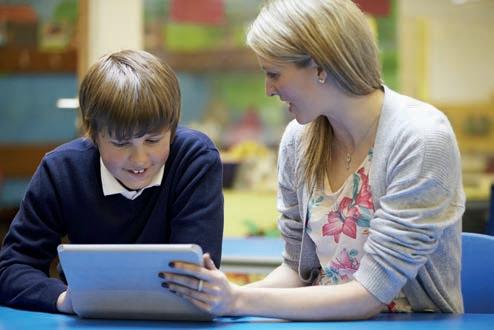
a critical role in recognising when this occurs and responding with compassion, teaching, and genuine invitation.
Belonging is not passive, it is cultivated through purposeful, ongoing action. And it is not the responsibility of teachers alone. Every adult in the school community contributes, whether in the classroom, the front office, the playground, or leadership spaces. Every interaction can either reinforce inclusion or undermine it.
In a world that feels increasingly divided, schools remain some of the last truly communal spaces. Educators hold the line for inclusion and respect, not because it’s easy, but because it is necessary. It is the antidote to disconnection, the foundation for learning, and the pathway to a more just, compassionate society.
Father and son Albert and Aidan Sykes once shared a story that continues to resonate with me
Aidan asked his father, “What are your dreams for me?”
Albert responded, “My dream is for you to live out your dreams. When children are born, they come with their hands closed, holding all their gifts. As they grow, they learn to unfold their hands and release those gifts to the world. My dream is to see you live with your hands unfolded.”
Isn’t that the purpose of education?
To create environments where every child belongs.
To help them anchor in their strengths.
To equip them with the skills for human connection.
To support them in living – with hands, hearts, and hopes – fully unfolded.
And in doing so, to remember this: educators and school leaders deserve the same.
Amid ongoing national conversations about what is broken or under-resourced in education, let us also recognise and uplift what is strong; the deep well of expertise, creativity, emotional intelligence, and care that teachers and leaders bring to their work every single day.
This, too, is a national asset, one worthy of investment, respect, and celebration. EM
Alongside civics and citizenship education, it’s also crucial that all Australian students leave school with well-developed media literacy knowledge and skills.
Our collective education goals as set out in the Alice Springs (Mparntwe) Education Declaration includes that all young ustralians become confident and creative individuals, successful lifelong learners and active and informed members of the community.
It’s these goals that guide ACARA in all our work – and which are strongly reflected in two of our recent initiatives findings from a national assessment into civics and citizenship education and a new curriculum resource on media literacy.
media literacy matters
The latest findings from the ational Assessment Program – Civics and Citizenship report, published in ebruary , demonstrate that more and more young Australians are choosing to consume news through the internet and social media, rather than the traditional media that their parents and grandparents are used to.
Whether it’s a news story, a television show, an online video or a social media post, our young people need to learn how to sort fact from fiction and work out whether something is credible or not.
We need to ensure students can develop the critical and analytical thinking needed to contend with an ever evolving digital media landscape.
As the recent federal parliamentary committee report looking at civics education and political participation highlighted, a strong understanding of media literacy is also crucially important if we want our young people to be active and informed citi ens.
New curriculum resource on media literacy
With that in mind, ACARA has released a new resource for teachers to help students develop a greater understanding of media literacy and the modern media landscape in a digitally connected world.
Developed working closely with academic, industry and teaching specialists, Curriculum Connection: Media consumers and creators helps our teachers ensure all students are engaged in developing media literacy knowledge and skills across oundation to ear , specifically in edia rts, nglish and igital Technologies.
The new resource explores how new media, including social media and digital tools, are changing the way young people communicate, and are being communicated to, and how this impacts their lives and communities. It will help teachers to support students to become critical and mindful thinkers when consuming media so they can recognise misinformation and disinformation, but also to be creative and imaginative producers.
The content has been curated and mapped across a number of key learning areas to give teachers quick access to resources that explain the language and terminology, along with downloadable documents, posters and infographics which can be applied for the level or age band they teach.
It is essential for young Australians to develop media literacy so they can be active participants in our society. ur new resource will make teachers better e uipped to achieve ust that.

Based on the performance and feedback from a representative sample of ear and ear students from across ustralia, the ivics and iti enship report highlights both positive aspects and significant challenges in civics education across the country.
Students continue to value learning about Australian history and civic institutions. They also e press high levels of trust in these institutions and demonstrate positive attitudes toward Australian diversity and Indigenous cultures. owever, the report also uncovers some worrying trends – most notably, a decline in students’ overall knowledge and understanding of Australia’s democracy, political system, and civic processes.
In , only per cent of ear students and per cent of ear students demonstrated proficiency in civics and citizenship – the lowest levels since we began these assessments in .
The report highlights ongoing educational inequalities, with students from major cities generally outperforming their regional and remote peers. The gap
between Indigenous and non Indigenous students remained substantial.
ear female students outperformed male students, continuing a trend from previous assessments. owever, unlike in past years, no significant gender difference was found at ear .
owever, when it came to students’ attitudes toward civics and citizenship, they showed a high level of trust in civic institutions and a strong interest in current affairs, reporting growing concerns about national issues, including climate change, pollution, crime, and racism. They’re also consuming news about current events differently – relying more on internet and social media sources, and less on traditional media. nfortunately, though, we’re seeing a decline in civic related school activities such as e cursions to parliaments and law courts.
What this means for our schools
Our school leaders play a pivotal role in ensuring that our young people receive
uality civics and citi enship education. The Australian Curriculum provides a clear framework, with dedicated content descriptions and achievement standards from ear to ear . It includes learning about important topics like our democratic system, the diversity of Australia, our legal system and our rights and duties as citi ens.
Translating this into engaging, meaningful learning experiences requires strong support for teachers and innovative approaches in the classroom. That’s where resources such as the ivics and iti enship ducation ub can help. It’s a platform that connects teachers with resources, events and programs to support civics and citizenship education in schools, in line with the ustralian urriculum.
The overnor eneral, s amantha Mostyn AC, has expressed strong interest in the report’s findings. he has engaged with ACARA to explore ways to improve civics education across the country. This level of attention underscores the importance of ensuring that all young Australians leave
school with a strong understanding of their rights, responsibilities, and role in society.
It’s true that the latest results are a wake up call, but they also provide an opportunity to reinvigorate our approach. By fostering critical thinking, active participation, and media literacy, we can empower students to become informed, engaged citizens who contribute meaningfully to their communities and democracy.
ow is the time to strengthen our commitment to both civics and citizenship and media literacy education. ur students are eager to learn about our country’s history, institutions and democratic processes. They are also equally keen to become analytical, creative and literate consumers and producers of media in our digitally connected world.
It’s up to all of us to ensure they have the knowledge and skills to navigate the world as active and informed citi ens. EM






Maths teacher Mr Duncan McBain shares insights from the Grattan Institute's much-discussed maths report, illuminating strategies to enhance mathematical education and teacher confidence.
A paper published by the Grattan Institute in April shows that one in three Australian school students fail to achieve proficiency in maths.
The report, The Maths Guarantee: How to boost students’ learning in primary schools, shows that students from disadvantaged backgrounds struggle the most with maths. But one in five students from well-off families struggle too.
A Grattan Institute survey of 1,745 teachers and school leaders across the country, conducted for the report, found some teachers lack confidence
to teach Year 6 maths, and many have concerns about their colleagues’ ability to teach maths.
“Maths has been deprioritised in Australia for decades,” said report lead author and Grattan Institute Education Program Director Ms Jordana Hunter.
“Governments have also been too slow to rule out faddish but unproven maths teaching methods.
“To turn rhetoric into reality, governments need to take seriously the evidence base on how humans, including children, learn maths most effectively.”
The report’s authors were resolute: when maths is taught well, children and the nation benefit. But taught poorly, students are robbed of a core life skill.
They noted that innumerate adults have worse job prospects and are more likely to struggle with routine tasks such as managing budgets and understanding health guidance.

“The opportunity to lift maths achievement starts in primary schools. Maths is highly cumulative, so it is imperative that primary schools teach maths well and lay down strong foundations
for future success,” the authors said.
They said most primary teachers are expected to teach maths, but not all have the maths knowledge, confidence, and training to teach it well.
“This isn’t fair for students. And it’s not fair for teachers either,” they said.
According to the Grattan report, there are proven strategies to turn this around.
It says some schools have already put these strategies in place.
“By implementing explicit and systematic teaching, effective catch-up support, and highquality professional learning for teachers, students at these schools are making fast progress and teachers feel successful.”
Believing all primary students and teachers deserve to experience that success, the report’s authors recommend governments, along with the Catholic and independent school sectors, should commit to a 10-year Maths Guarantee strategy.
“First, they should commit to a longterm aspiration of 90 per cent of students achieving proficiency in numeracy, as measured by NAPLAN,” they said.
“Second, they should ensure schools have clear guidance on how to teach maths well. Department staff should align on this guidance too.”
Third, they recommend governments should arm schools with quality-assured curriculum materials and rigorously evaluated assessments.
“Fourth, they should invest in high-quality professional development to support teachers
and school leaders to implement best practice in their classrooms.
“Fifth, they should improve monitoring and oversight through stronger school reviews and the introduction of a mandatory, research-validated early years numeracy screening tool.”
As Junior School Mathematics Coordinator at Methodist Ladies’ College in Melbourne, Mr Duncan McBain is responsible for teaching and leading maths education from prep to year six.
He has been at the school since 2022 and in his current role since mid-2023, with 16 years of teaching experience. His role includes developing staff skills, implementing evidence-based teaching methods, and supporting students' mathematical learning.
Mr McBain sees the Grattan Institute's maths report as a pivotal moment for mathematical education.
“Throughout my 16-year teaching career, literacy has consistently dominated school priorities, with reading and writing taking centre stage. It's encouraging to see mathematics finally receiving the attention it deserves,” he said.
“The report identifies a critical need to refocus our educational efforts, giving mathematics its much-needed moment in the spotlight.”
Mr McBain also notes The Maths Guarantee mirrors his educational philosophy of evidence-based teaching.



“The report's five points align with current educational research, validating the approaches many experts have been advocating,” he said.
“It's particularly encouraging for our school, as we've already been on this journey towards evidence-based mathematics teaching for the past couple of years. Seeing these strategies now being recommended across government, Catholic, and independent school sectors confirms we're on the right path and provides broader validation of our approach.”
The challenge of mathematical confidence among teachers is a pervasive issue in education, deeply rooted in systemic gaps and personal insecurities. Mr McBain said he has often witnessed it.
“In every school I've worked, I've encountered teachers hesitant to teach older students due to their own mathematical uncertainty. Some openly admit, ‘'I'd love to teach the older kids, but I don't know the math, so I'm not going to do that'.
“It's a pervasive challenge I've witnessed consistently across different educational settings, reflecting a broader confidence crisis in mathematical education,” he said.
The consequences of this lack of confidence are significant.
He believes the solution is multifaceted, requiring comprehensive support systems. Mr McBain said initial teacher education must be reimagined to build robust mathematical








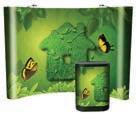
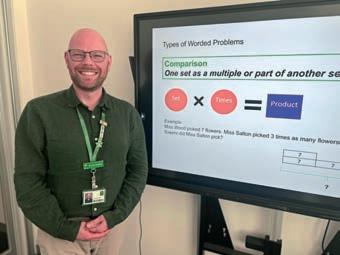
understanding, providing educators with both content knowledge and pedagogical strategies.
Professional development programs need to target mathematical confidence specifically, offering targeted support and skill-building opportunities.
Curriculum materials play a crucial role in supporting teachers.
"Once they start feeling successful with teaching the mathematical content," he said, "they're going to start enjoying teaching maths." This psychological dimension is critical – confidence breeds engagement, and engagement drives improved educational outcomes.
The Grattan Institute's report corresponds with Mr McBain's observations, highlighting the need for systematic approaches to building mathematical confidence. By creating supportive environments, providing high-quality resources, and recognising the psychological barriers teachers face, education systems can begin to address this fundamental challenge.
Mr McBain also shared his enthusiasm for several key recommendations in the report.
The early years screening tool stands out: "Mandating the early years screening tool is a game-changing recommendation. It's essential for identifying students at risk of falling behind in fundamental mathematical skills,” he said.
“The Centre for Independent Studies is currently running a screening project involving around 100 schools, including MLC, which I believe is crucial for developing
evidence-based assessment strategies. By implementing these screening tools, we can proactively identify and support students struggling with basic number facts and mathematical abilities before these gaps become insurmountable.”
Another positive aspect in the report is the focus on initial teacher education.
“Similar to recent literacy reforms, this approach aims to build robust university courses with strong structural frameworks for mathematics teaching. The key is creating a hierarchical, sequenced learning approach with small, manageable steps,” he said.
“By developing initial teachers' skills systematically and showing them how to apply mathematical concepts progressively, we can alleviate the current confidence gap. This structured approach will help new teachers build their mathematical knowledge and teaching capabilities more effectively.”
Lastly, Mr McBain is intrigued about the report’s proposal to create ‘Maths Hubs’ to enable the best primary schools to work directly with other schools that need help.
"To allow teachers to build and learn from each other... that's so positive," he said, highlighting the collaborative potential of these proposed educational networks.
"So many principals I've worked with have sought peer observation," he notes, "and the best professional development you're going to get is learning from another teacher."
This peer-to-peer learning model could transform mathematical education by creating structured opportunities for knowledge exchange.
The potential for cross-school collaboration excites Mr McBain, particularly the opportunity to learn from high-performing mathematical institutions.
"Schools like Bentley West, Docklands Primary School, and Ballarat Clarendon – who have gone through the journey and have gone through change – being able to work sideby-side with teachers in those schools is so valuable," he said.
These hubs represent more than just professional development; they're about building a community of mathematical expertise. "You're building this community of maths and maths education," he said, seeing the potential for systemic improvement through
shared learning and collaborative strategies.
By creating these networks, schools can share best practices, support each other's growth, and ultimately create a more robust, interconnected approach to mathematical education across different sectors.
The Grattan report's ambitious goal of 90 per cent maths proficiency seems entirely achievable to Mr McBain.
"It’s definitely achievable," he said.
Professor Joanna Barbousas, Pro ViceChancellor of Education, Impact and Innovation at La Trobe University, said the Grattan Institute’s latest report is yet more evidence that Australia needs to take action to halt its ongoing numeracy crisis.
“The lifetime impact for students who fall behind on these core skills is substantial, affecting long-term employment, health and social outcomes and perpetuating cycles of disadvantage,” she said.
“Teachers are telling us they feel unprepared for the classroom. When half of our 15-year-olds fail to achieve national standards in maths, it’s not the students who are failing, it’s our approach to education.”
With more than 29 years’ experience in education, Professor Barbousas is credited with fundamentally reshaping both teacher education and education policy in Australia.
Since joining La Trobe University in 2016, she has positioned the School of Education as a leading provider of teacher education through evidence-based innovation and explicit teaching.
Well-known for its Science of Language and Reading (SOLAR) Lab, which retrains literacy teachers with explicit methods, La Trobe University recently launched the Science of Mathematics Education (SOME) Lab, which aims to tackle Australia’s mathematics crisis, training teachers how to break down concepts into clear, logical steps to replace the fads that have left many students struggling with basic numeracy.
“SOME Lab will empower educators to understand how people learn mathematics, promoting low-variance, highly systematised instructional approaches to ensure all children develop sound and robust numeracy skills,” Professor Barbousas said. EM


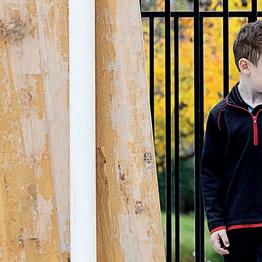

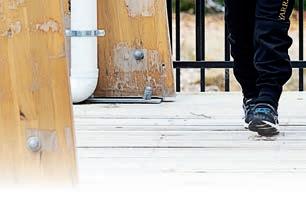



At Yarra Valley Grammar, teaching transcends textbooks. Educators are mentors, counsellors, and champions of student wellbeing, dedicated to nurturing not just academic minds, but compassionate, confident young people. Education Matters magazine spoke with the schools’ leaders to learn more.
Dr Mark Merry, Principal of Yarra Valley Grammar since 2009, and Deputy Principal Mrs Julie Hall share the school’s commitment to supporting the wellbeing and development of its 2,000 students, from early learning through to Year 12.
“We’ve long recognised the intrinsic link between wellbeing and learning,” Deputy Principal Mrs Julie Hall says.
As the Deputy Principal for Students at Yarra Valley Grammar, she oversees a comprehensive pastoral care system that goes far beyond the traditional role of a school counsellor.
“It’s a big team effort,” she says. Under her leadership, the school has assembled a dedicated wellbeing team, including
heads of wellbeing for the junior and senior schools, six psychologists, three speech therapists, an occupational therapist, and teachers for deaf students. This multidisciplinary approach is designed to ensure that every student’s needs are met.
“We also have a learning support department, and our teachers take on a pastoral tutor role as well as heads of year level and heads of school,” she says.
Principal Dr Merry says this emphasis on wellbeing has only grown in recent years.
“The lockdown accelerated the need for wellbeing services, with many students experiencing increased anxiety.”
Whether it’s social anxiety from the isolation of remote learning or the
overstimulation of social media, he says the school has seen a rise in the number of students requiring additional support.
Building connections and resilience
At the heart of Yarra Valley Grammar’s wellbeing strategy is the belief that a safe, caring, and connected environment is essential for students to thrive, no matter their year level.
“That connection is really the key to student wellbeing,” Mrs Hall says.
“We want our school to be a place where students are known, where they are greeted by name. That’s why we provide extensive pastoral care through our tutor program, our health and PE programs, and
learning support. But we know we’re not the e pert in all fields, so we have some great partnerships as well.”
To foster these connections, the school has implemented a range of programs and partnerships. From The Resilience Project in junior school, to The Man Cave and The Flourish Journey in middle school, to Tomorrow Man, Tomorrow Woman and High Performance Mindfulness for senior students, these initiatives provide structured curriculums and engaging presentations so students can develop essential life skills.
“Each organisation provides us with resources that we use in our pastoral program, but we also have Wellbeing Days, where a representative from these organisations will come onsite and actively engage with our students,” Mrs Hall says.
“We didn’t want them to come for a one-off visit,” she says. “We wanted a meaningful, ongoing relationship that builds on itself each year.” This scope and sequence ensures students receive a comprehensive wellbeing education tailored to their developmental needs.
Yarra Valley Grammar also engages a law firm to present to senior students on topics such as respectful relationships, consent and Victoria’s Child Safe Standards.
Working with various experts highlights a changing dynamic in schools.
“The days of qualifying as a teacher and going into a classroom to teach a particular subject are over,” Dr Merry says. “Now, a teacher needs to be attuned to pastoral care, resilience, and child safety. They must be attuned to the broader aims of education. It’s not just about educating the mind anymore. It’s about educating the student in a more holistic sense.
“We try to imbed digital literacy and being a safe digital citizen in every subject. It can’t be taught in isolation. It must be taught within everything we do,” he says.
But it’s not just the formal programs making a difference. The school’s emphasis on creating a strong sense of community is evident in the way teachers and students interact.
“I’ve never known a school where the teacher-student relationship is so strong,” Mrs Hall says.
“The students here really know the teachers care about them, and they want to
learn about their teachers as well.”
This mutual respect and genuine interest in one another’s lives are hallmarks of the ‘Yarra Spirit’ that permeates the campus. From the annual Carols event that brings
“We have a large intake in Year 7,” Mrs Hall says, “so we have a very extensive transition program to help students feel comfortable and connected.”
This program begins with the school’s

“They might be coming from a small primary school, and suddenly, they’re in Year 7 with 260 students. It’s important for them to have several visits.”
Once the students arrive at Yarra Valley Grammar, the transition continues with orientation days where they can meet their new classmates and tutors – the teachers who will be their primary point of contact for pastoral care.
“The tutor is like their homeroom teacher,” Mrs Hall says, “and they’ll have a pastoral care session everyday with their tutor, as part of our 10-day timetable”.
This focus on building relationships and rapport is a hallmark of the school’s approach. It is known for cultivating mutually respectful teacher student relationships.
“We keep the students at the heart of everything we do, even when we’re making huge decisions. In his role of leading the executive team, Dr Merry will always say to us, ‘What is best for the students? How is this going to impact the students?’,” Mrs Hall says.
“The students here really do love their school,” Dr Merry says. “They love coming here, and there’s a great sense of community.”
Preparing students for the future
In an era where academic achievement is often the primary focus for many schools, Yarra Valley Grammar is taking a refreshingly holistic approach to education.
While the school’s stellar academic results speak for themselves, the true heart of a Yarra Valley Grammar education lies in the school’s commitment to nurturing the whole child through a rich and diverse co-curricular program.
“It is well-known that Yarra Valley Grammar does very well academically,” Dr Merry says. Case in point: It was named The Age’s 2024 Schools that Excel winner for non-government schools in Melbourne’s east for achieving outstanding advancement over the last decade in VCE results.
“But that’s just one side of the equation. What we really want to do is expose our students to as much breadth and experience as possible.”
This philosophy is rooted in the belief that children cannot be neatly compartmentalised into academic and non-academic realms.
Rather, the school sees the development of the mind, body, and spirit as inextricably linked – a perspective that is increasingly resonating with parents.
“A lot more families are asking us about the broader experience of young people in schools,” Dr Merry explains. “While it’s good to be performing in the top academically, that’s not enough anymore. We really have to be able to look at the whole experience of that young person and make sure the experience is a good one.”
We try to imbed digital literacy and being a safe digital citizen in every subject.
Dr Mark Merry
At the heart of Yarra Valley Grammar’s cocurricular philosophy is the belief that students should be given the opportunity to explore a wide range of interests and passions. From music and the performing arts to sports and community service, the school’s co-curricular program is designed to cater to the diverse talents and inclinations of its students.
“Every student learns a musical instrument
involved in dramatic productions at the school. Every student is involved in community service and outreach and fundraising for charity. And lots of students are involved in debating.”
The Yarra Valley Grammar debating teams have this year celebrated an impressive season in the Debaters Association of Victoria (DAV) competition, winning three of the four divisions.
In addition, three students were acknowledged for their debating prowess with a ‘Swannie’, an annual award given to the top speaker in each grade and region at debates run by DAV. One of the three students has now won this prestigious award over three consecutive years.
Dr Merry says the rationale behind the school’s co-curricular approach is simple: “Students might not know at the age of 12 what they’re going to love or what they’re going to be good at, so they get a chance to try everything.”
This philosophy of exploration and discovery extends beyond the traditional realms of sports and the arts. The school is constantly seeking out new and innovative co-curricular offerings, from robotics and coding to outdoor adventure activities like rock climbing and kayaking.
“We’re even looking at lawn bowls now,” Dr Merry says, underscoring the school’s

Every student learns a musical instrument.
“Parents love the idea that their young person is going to have the opportunity to try lots of different things, including some things they never dreamed of doing.”
i ing confidence nd co ion
However, as Dr Merry points out, Yarra Valley Grammar’s co-curricular program is about more than just exposing students to a wide range of activities. At its core, it’s about e uipping young people with the confidence, resilience, and sense of purpose that will serve them well beyond the school gates.
“Our philosophy is very simple,” Dr Merry explains. “We equip our young people here with knowledge and skills, which are important, but we also equip them with confidence so that when they go out in the world, it’s not about ‘me’, it’s about what kind of service they can be to their community, families, friends, and their workplace.”
This emphasis on service and contribution is a hallmark of the school’s approach, and it’s reflected in the way students are encouraged to take on leadership roles and engage with the broader community.
“If you ask any child who’s applying for a leadership position and ask them what our model of leadership is, they will say it’s servant leadership,” Mrs Hall says.
By fostering a sense of responsibility and a commitment to making a positive impact, Yarra Valley Grammar is nurturing a generation of young people who are not only academically accomplished, but also deeply engaged with the world around them.
“School really is about discovering ‘What can I bring to the broader community?’. And I look at our young people graduating, and I’m convinced that they get it,” Dr Merry says.
Recognising the broader role of teachers
The common perception of a teacher is often that of an educator imparting knowledge and skills to their students, but as Dr Merry points out, the role of a modern teacher goes far beyond the confines of the classroom.
“I think the broader role of the teacher is being immersed in looking after the emotional and mental health of young people, and keeping them safe in their formative years,” he says. “I think that broader role isn’t fully understood by the general public.”
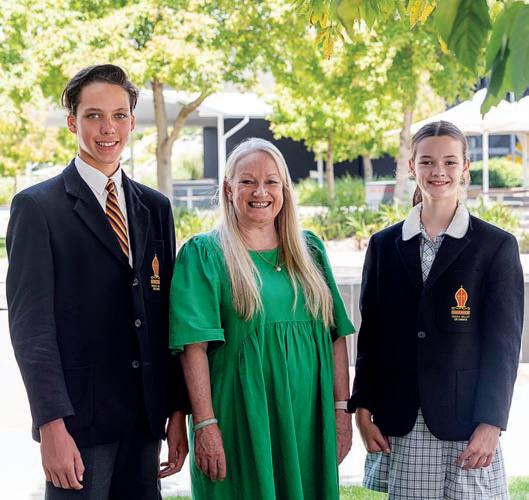
This sentiment is echoed by Mrs Hall, who emphasises that the broader community may not fully understand the multifaceted responsibilities that teachers’ shoulder.
“I think people got a glimpse into a teacher’s life during COVID, when we were teaching online, but that was only a brief look,” she says.
“We have two deputy heads at Yarra Valley Grammar – one who looks after curriculum and teaching and learning, and one who looks after the wellbeing and growth of our young people. The fact we have deployed people in equal parts shows schools are doing more than just teaching literacy and numeracy.”
At Yarra Valley Grammar, the school’s hiring process reflects its holistic understanding of the teacher’s role. When interviewing prospective teachers, the panel not only assesses their subject matter expertise and teaching philosophy, but also delves deeper into their approach to working with young people.
“When we interview for a teacher position at the school, we enquire about their subject knowledge, classroom experience, and their philosophy on teaching,” Dr Merry says.
But the school doesn’t stop there. The interviewing panel is also tasked with exploring
the candidate’s philosophy about young people, their approach to building relationships, and their genuine passion for nurturing and supporting students.
As the interview process highlights, the role of a teacher at Yarra Valley Grammar is not just about imparting academic knowledge, but about fostering the emotional, mental, and social wellbeing of their students.
It’s a responsibility that requires a unique blend of expertise, empathy, and dedication. At the end of 2024, Dr Merry had the opportunity to celebrate this unsung heroism when he delivered the oration at Monash University’s education faculty graduation.
He used this platform to enthuse the next generation of teachers, highlighting the importance of their broader role in nurturing and caring for young people.
“I spoke about the fact that they have agreed to a life of service – and good on them,” he says.
By recognising and championing the multifaceted nature of the teaching profession, Yarra Valley Grammar is not only honouring the hard work and commitment of its own educators, but also setting an example for the broader education community. EM


With a teaching career that began in 1988, Ms Sherrell Bonney-Williams is now leading a groundbreaking project to implement the first nationally recognised Kaurna language curriculum in South Australian schools.
Growing up in a family of change-makers, Ms Sherrell Bonney-Williams was inspired by Aboriginal leaders who demonstrated the power of education.
Her great aunt Gladys Elphick, a prominent Kaurna Elder and founding president of the Council of Aboriginal omen of outh ustralia, e emplified community leadership that deeply influenced Ms Bonney-Williams's career path.
When Ms Bonney-Williams, a Kaurna and harunnga descendent, first entered the teaching profession in 1988, she was assigned to Renmark Junior Primary School, which was amalgamated and no longer exists, on the Murray River three hours north-east of Adelaide.
“I can still remember my first day at the school. There was one computer in the classroom – a Commodore 10. I had a reception class which had an intake at the beginning of the year, and another intake mid-term. That's how it was structured in those days,” she says.
Despite the archaic technology, her early years were characterised by emerging educational resources for teaching Aboriginal Studies, with the South Australian Department of Education publishing innovative teaching units that incorporated dreaming stories from different South Australian Aboriginal groups.
Her career quickly expanded beyond traditional classroom roles. She worked as a Coordinator at Winkie Primary School, a predominantly Aboriginal school, and then moved to the istrict ducation ffice in Berri.
“I worked there for three years to implement several programs that the Aboriginal Education Unit in South Australia developed, and it was a whole suite of professional learning for teachers in primary and secondary schools on how best to support the needs of Aboriginal students,” Ms Bonney-Williams says.
Around 2010, she developed a partnership agreement at Blair Athol B-6
school, in inner Adelaide, and co-worked in developing an agreement with Mannum Area School, up on the Murray.
“This involved working with parents, staff and leadership to bring positive relationships and interactions to support Aboriginal students to have a voice,” she recalls.
In 2016, Ms Bonney-Williams made a significant career transition, returning to Adelaide after years of teaching in rural areas. Exercising her Department of Education right to transfer after working more than 28 years in the country, she endured a challenging selection process.
“You could select from 75 schools to then apply for. I had no idea which school I was going to; I could have been appointed anywhere within 45 kilometres of my home address,” she says.
Fortunately, her comprehensive cover letter detailing her skills, ualifications, and interests caught the attention of Marryatville Primary School's then-Principal

Ms Angela Falkenberg, now President of the Australian Primary Principals Association.
Ms Bonney-Williams was appointed to the school, teaching grade one and two.
This move wasn't just a professional shift, but a return to her cultural roots. Drawing on her early training, which included a specialised major in Aboriginal Studies, Ms BonneyWilliams brought her deep understanding of Aboriginal Education to her new school, continuing her lifelong commitment to meaningful, culturally responsive teaching.
Ten years after joining Marryatville Primary School, a new opportunity presented.
In a groundbreaking initiative, the SA Department of Education have collaborated with Aboriginal writers and Aboriginal Community Organisations to develop a Kaurna language framework.
Ms Bonney-Williams, who was involved in the reference group, successfully applied for an advertised position for a Project fficer in boriginal anguages – aurna. She now leads the implementation of the first nationally recognised boriginal language in Kaurna curriculum in South ustralian schools.
"This is a project that has been developing over the last four years to have an Aboriginal language written up in the Australian curriculum framework," Ms Bonney-Williams e plains. "It's the first one nationally."
The project is supported by Ngarrpadlarna Mila, an organisation whose name translates to five aunties’ in the aurna language. Established just two years ago, the organisation is composed of Aboriginal teachers and leaders dedicated to cultural education and first language revival.
"Ngarrpadlarna Mila was set up when one of our members retired from teaching and wanted her mother’s aurna language teaching to continue on Kaurna country for all to learn from," Ms Bonney-Williams says.
“A group of Aboriginal teachers decided to establish an organisation in culture and Aboriginal language education to assist with the co-design, publication and implementation of the Kaurna language scope and sequence." They secured a grant to enable the pilot project over a two-year period.

We've co-designed a whole year of professional learning and mentoring to support them in becoming better and more confident teachers in the classroom.
Ms Sherrell Bonney-Williams
The program is being piloted in 10 schools on Kaurna country across Adelaide, including Kaurna Plains School, an Aboriginal school in Elizabeth, a northern suburb of Adelaide, operating from preschool to year 12.
John Hartley School, a birth to year six coed school in mithfield lains, outh ustralia, is also involved in the pilot.
ther pilot schools are ake indemere B-6, Paralowie R-12, Salisbury North Primary School, Burton Primary School, Glenelg Primary School, Keller Road Primary School, Modbury South Primary School and Madison Park Primary School.
These schools will implement a comprehensive Kaurna language curriculum developed through extensive community consultation.
Ms Bonney-Williams emphasises the importance of community-led language education.
"It's not mainstream teachers picking up the document and teaching," she explains. "We have Aboriginal Kaurna language educators who have completed ertificate two and three in earning an ustralian irst
ation’s anguage, trained specifically to deliver the language."
Her current role focuses on building the capacity of Kaurna language educators.
"We've co-designed a whole year of professional learning and mentoring to support them in becoming better and more confident teachers in the classroom," she says.
This approach reflects a deeper commitment to cultural recognition and preservation. Many schools are now incorporating Kaurna names for spaces, creating bush tucker trails with native plants, and establishing yarning circles –demonstrating a growing commitment to Indigenous cultural integration.
For Ms Bonney-Williams, this secondment represents more than a professional role –it's a continuation of her lifelong mission to empower Aboriginal communities through self-determination and education.
"We want culture and language enriched in our schools," she says, "to ensure our community's knowledge and traditions continue to thrive.”
Beyond her work in education, Ms Bonney-Williams remains committed to community engagement. She conducts tours and supports classes at the historical site called The Colebrook home, situated at the Blackwood Reconciliation Park, which features a memorial to the Aboriginal children and their families of the Stolen Generation, and has been involved in creating a documentary to educate about the tolen enerations.
She is also involved in supporting the South Australian NAIDOC Week Committee, organising activities for the Family zone that celebrate Indigenous culture.
"I donate my time because it's for my community and about bringing out the best," she says.
Ms Bonney-Williams also works with Kaurna Warra Karrpanthi, an Aboriginal language organisation that names community places and provides educational resources for learning Kaurna.
Her community work extends to naming significant sites in delaide, ensuring aurna language and cultural recognition remain prominent in public spaces. EM
From strategies for culturally safe classrooms to sessions designed specifically for educators who can't get to the conference until after the bell, EDUtech Australia has all your professional development needs covered.
Speaker book signing
Meet the minds shaping education's future and turn inspiration into action at EDUtech, taking place at the International Convention Centre Sydney from 11-12 June.
Ms Elizabeth Paterson, Conference Producer and Event Operations Manager at Terrapinn, which organises EDUtech
minds behind today's most transformative educational thinking,” she said.
“Attendees will have the opportunity to meet speakers, after they’ve presented, at Stand 1207 where their books will be on sale, and they as authors will be there to chat and sign their books.”
Attendees need to check EDUtech’s
doing a meet-and-greet and book signing at 12 noon on Day 1. Attendees will need to bring their own copy of Sal’s bestselling book, Brave New Words: How AI Will Revolutionize Education (and Why That's a Good Thing), for signing, as copies won’t be available for purchase,” Ms Paterson said.



“We understand that a teacher's day doesn't always align with traditional conference schedules,” Ms Paterson said.
“That's why EDUtech is excited to announce After The Bell – a series of afternoon sessions designed specifically for educators who can't attend the full conference but still want meaningful professional development.”
Running from 4:00 PM to 6:00 PM, these focused sessions allow metropolitanbased educators to head straight from the classroom to professional learning without missing a beat.
“There is no need to arrange substitute coverage – they can simply finish their school day and join their colleagues at the I ydney.”
Across these dynamic sessions, Ms Paterson said, attendees will gain practical digital skills that seamlessly integrate into everyday teaching practices.
“From accessibility tools that support diverse learning needs to cloud collaboration techniques, design fundamentals, and productivity shortcuts – these sessions provide educators with immediately applicable strategies to enhance classroom engagement and streamline workflows,” she said.
First Nations Seminar
Across two days of EDUtech, discover strategies for culturally safe classrooms that embed Indigenous perspectives, language revitalisation, and cultural competency.
Sessions will explore student wellbeing, community engagement, Indigenous STEM initiatives, and career pathways, emphasising
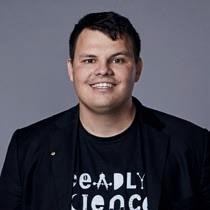

Whether you're exploring your first steps into AI or leading digital strategy across your institution, Google’s presence at EDUtech 2025 is a must-see.
Ms Elizabeth Paterson
Elder and community leader partnerships to enhance education for Aboriginal and Torres Strait Islander students.
“In addition, on Day 1, we are looking forward to welcoming Adam Goodes, AFL legend and Indigenous leader to the tech plenary stage for the first time,” s aterson said.
“He and Annabel Astbury, Head of Education at the ABC, will chat about all thing’s education, cultural inclusion, and empowering young Australians.”
Google for Education returns to EDUtech 2025, reinforcing its leadership in bringing practical, impactful AI to the classroom.
“With a dedicated Google for Education Teaching Theatre running across both days, this is where educators, ICT managers, and school leaders can experience how Google’s latest advancements are reshaping teaching and learning,” Ms Paterson said.
Attendees will get hands-on with powerful new tools within Google Workspace for Education that streamline collaboration, reduce admin, and support more personalised learning.
“With a growing focus on responsible AI in education, Google is helping schools harness

these technologies to engage students and boost outcomes, safely and effectively,” Ms Paterson said.
Sessions in the Teaching Theatre will explore real-world applications, share insights from schools already embracing AI, and offer opportunities to speak directly with Google’s education specialists.
Attendees can also explore the latest Chromebook devices – designed to be secure, scalable, and fit for modern classrooms.
“ hether you're e ploring your first steps into AI or leading digital strategy across your institution, Google’s presence at EDUtech 2025 is a must-see. We urge attendees to discover how the right tools can help empower every educator and every student,” she said.
ttendees are invited to celebrate the first day of EDUtech 2025 in style at the EDUparty.
“After a full day of inspiration, ideas, and innovation, it’s time to unwind and connect with fellow educators, edtech leaders, and changemakers,” Ms Paterson said.
Taking place in the expo hall in the afternoon on Tuesday 11 June, EDUparty is a networking celebration that brings the community together in a relaxed, social setting.
“Enjoy a vibrant hour of complimentary drinks and entertainment. Whether you’re toasting new connections or simply soaking in the atmosphere, it’s the perfect way to cap off Day 1. Don’t miss the chance to celebrate the future of education, this is where the conversations continue, and the good times begin.” EM



Indoor environmental sensors can now detect vaping in schools, instantly alerting administrators and connecting with camera networks to combat this growing challenge among students.
In the ongoing battle against student vaping, a technological solution is transforming how schools monitor and protect students, school property, and the surrounding environment.
Axis Communications has developed an indoor sensor, offering schools a sophisticated approach to addressing emerging safety and wellbeing challenges, often detecting problems before they escalate. Mr Yung Huynh, Education Segment Key Account Manager, Oceania at Axis Communications, says vaping is a significant issue in schools today.
“Our new environmental sensors can detect vaping incidents in real-time, helping schools coordinate a swift, intelligent response through connected systems. By integrating with our network solutions, such as cameras and audio, these sensors provide an immediate response.”
The Swedish-based company has developed a connected security ecosystem – combining video, audio, analytics, and access control – that transforms how schools approach safety and communication.
“Our solutions are already being used across Australia,” Mr Huynh says.
“They’re not just cameras – they’re intelligent devices that can detect everything from unauthorised entries to specific security risks.”
Axis’ solutions go beyond traditional security cameras. License plate recognition allows schools to track vehicle entries, while perimeter monitoring provides

comprehensive campus protection. But the true innovation lies in the system’s ability to communicate across different platforms, including audio and authorised access systems.
Network audio represents a revolutionary approach to school communications. Unlike traditional public announcement systems confined to administration offices, these intelligent platforms can create targeted audio communications within school zones.
For instance, special needs classrooms can receive lower volume notifications, while senior student areas get ageappropriate communications.
“Schools can now zone their communications with precision, delivering the right message, at the right time, in the right place,” Mr Huynh says. “We can now deliver specific alerts to e act locations, ensuring that communications are both targeted and effective.”
The system’s capabilities are remarkably sophisticated. If a camera detects an unauthorised individual, the network audio can instantly broadcast specific alerts.
Access-control technology adds another
protective layer, using smart swipe card mechanisms to restrict unauthorised building access. Each component –cameras, audio networks, sensors – works as an integrated security ecosystem. It’s a comprehensive strategy for protecting students and maintaining a secure learning environment.
“The future of school security is built on intelligent, connected technologies that can detect, analyse, and respond in real time. It’s about empowering schools to create safer, more responsive environments for students and staff,” Mr Huynh says.
For schools seeking cutting-edge safety solutions, Axis Communications provides a glimpse into a more intelligent, interconnected approach to protecting students and property.
“Modern educational security requires more than cameras. It demands smart, adaptive technologies that understand and respond to each unique environment,” he says. EM
From classroom teacher to tech innovator, Mr Steve Clarisse is transforming school management with a user-friendly solution that simplifies educators’ daily challenges.
Overwhelmed by administrative tasks, teachers struggle with complex software. Mr Steve Clarisse, a former teacherturned-entrepreneur, is offering a lifeline, providing schools with a user-friendly student management system he designed, as well as IT support, web design and marketing services.
Born from a passion for technology and education, nForma began in 2000 when Mr Clarisse wrote a simple program for his Catholic-school classroom to interpret his student’s progress.
During parent-teacher interviews, he used the program to show parents how their children were progressing – an extraordinary concept at the time.
“The principal had pretty good feedback, so he said, ‘Let’s use it across the whole school’. So I designed software that captured all the relevant student data, and it continued to evolve from there,” Mr larisse says.
The principal then told another principal at a Catholic school’s network meeting about the program, and word spread, with most Melbourne Catholic schools signing on to nForma.
Mr Clarisse credits its success to his distinctly user-centric approach, ensuring that even teachers uncomfortable with technology could navigate the system easily.
Family has also been integral to nForma’s success.
“My mother was a teacher, my brother is a principal, and my wife is a teacher – I can see how much administrative work is involved before she even starts teaching her class,” Mr Clarisse says.

also support schools in maintaining their network, their computers, everything that plugs and plays,” he says.
This holistic approach sets it apart from competitors, as does a family business model.
“Some staff have been with me since day one,” Mr Clarisse says. “Some have already retired, and now their children have come on board.”

In fact, his wife became his first critical user test – if she could understand the program, he knew most teachers would find it accessible.
Support is another cornerstone of nForma’s success. Schools appreciate that they can contact nForma directly for guidance, with the company providing immediate, personalised assistance.
“Schools know they have backup support whenever they need it,” Mr Clarisse says. “I say to schools, ‘Leave the stress to us’ so educators can focus on teaching.”
Since starting up 25 years ago, the company’s growth has been intentional and measured.
“I like to do things slowly but surely,” Mr Clarisse says. “We want to maintain the level of support we’ve become known for.”
Currently serving around 200 schools in Victoria, primarily in the Catholic sector, nForma is continuing to expand without compromising its core values.
Beyond software, the company offers comprehensive IT assistance.
“We have a team of technicians who
This generational commitment ensures continuity and deep institutional knowledge, he says.
Looking to the future, Mr Clarisse sees potential for broader impact, assisting schools and the parent community to better manage their student management software modules with new and exciting modules currently in development.
The company’s philosophy goes beyond technological solutions.
“My intention was, and still is, to help my colleagues in the education sector,” Mr Clarisse explains.
“I know how stressful it is because my wife’s still teaching, so I can see how much work is involved.”
With a commitment to reducing administrative stress, providing exceptional support, and creating user-friendly technology, nForma represents more than just a software company. It’s a missiondriven organisation that understands the real challenges educators face daily.
“We’re still keeping our promise,” Mr Clarisse says. And in the complex world of educational technology, that promise of simplicity, support, and understanding is what continues to set nForma apart, he says. EM






























Nüdel Kart is transforming STEM learning, o ering hyper immersive activities that help educators develop students’ STEM, social skills and wellbeing through engaging, hands-on experiences.
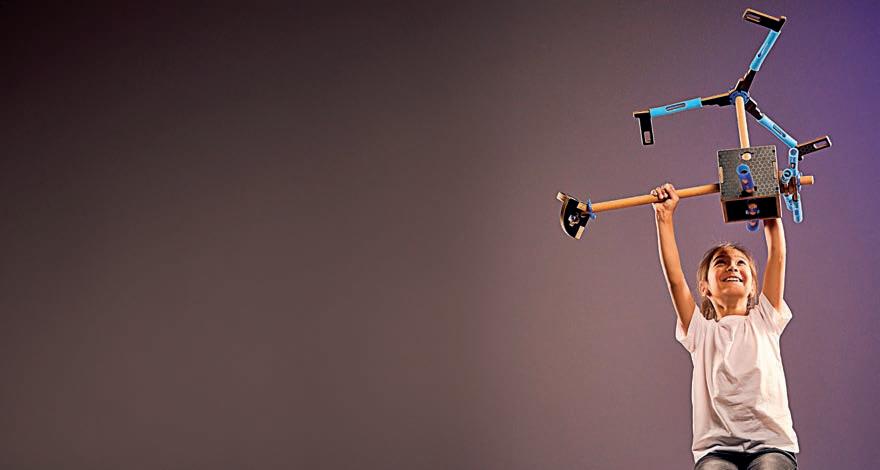
on profit layground Ideas has reached a significant milestone with another ma or e hibition at cienceworks in elbourne.
cienceworks’ Tinkertown hands on e hibition is offering schools an immersive T and social skills e perience with layground Ideas’ del art, available until ebruary . imilarly, del art is featured at uestacon – an interactive science and technology museum in anberra – every school holidays.
“ uestacon has also now implemented our del ods as well as the karts, our latest product specifically designed for younger children, into their operations,” says layground Ideas founder and r arcus eerman.
“Both represent ma or developments and we are super chuffed to have our two largest science museums taking the plunge. It’s a real honour that they can see the value in this kind of deep learning.”
“It represents a ma or validation of our approach to interactive, engaging learning e periences for children.”
r eerman established layground Ideas in to provide schools and communities all over the world with the free tools and resources they need to build a I play and learning space.
owever, he saw a gap in their offering. ith the help of a Belgian T toy designer, s mma ibbens, the pair co designed del art, a deconstructable, mobile kart that e plodes into a research backed loose parts space that children can e plore with billions of different combinations.
del over soon followed, a more compact and transportable version of the original del art, ideal for small groups and tight spaces.
ore recently, del od has oined the set, which empowers children to create a limitless array of customised toys at home, based on their interests.
del od was recently named a ood esign ward winner in the roduct esign port and ifestyle category. It is not the first time the del brand has been recognised for its innovative design.
In , del art received a ood esign ward old ccolade in the roduct esign port and ifestyle category in recognition for outstanding design and innovation. The deconstructable, mobile cart also won in the ocial Impact category in the same year.
“ ur del art and od have won the highest design awards in the country for their design, form and functionality,” r
eerman says. The piece del art is about the si e of a outh ast sian noodle cart, but it’s called del art because it supports children to noodle around’ and to use their noodle’ – two e pressions r eerman says he has always loved.
Cost-effective incursions or schools which may not be able to visit uestacon or cienceworks, due to distance or budget constraints, there is an affordable alternative.
r eerman says layground Ideas is well e uipped to help schools have the e uivalent cienceworks or uestacon e perience with their students without leaving school, saving hundreds or possibly thousands on the cost of transport.
“ cienceworks is incredible but if schools in elbourne go on an e cursion to cienceworks, it might cost to for each child, and that’s mainly because you have to add another to for the bus but we have an ama ing alternative to help schools,” r eerman says. In contrast, del art incursions, starting at ust per student, offer schools a significant cost saving opportunity.
“It’s a really affordable and easy way of creating a high uality e perience

in T , social skills development, and wellbeing,” he says.
The program delivers comprehensive minute sessions that can accommodate up to three classes simultaneously, reaching up to students per day.
“ e can support from one to nine classes in a day, so we can often support every student in the school over one to two days,” r eerman says, highlighting the fle ibility and accessibility of their innovative learning approach.
“ ight now, many schools are struggling with tight budgets for educational e periences but there is more desire for great activities. ur message is simple funding can be challenging, but we have a solution,” r eerman says.
or schools that have some budget and are looking for a long term option to increase T , creativity, wellbeing, social skills

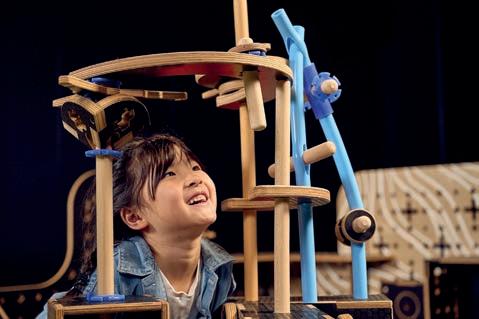
and creativity, layground Ideas is currently offering a series of three free resources to help schools make the decision of whether it
is right for them.
irstly, schools can download a free creativity manual to start to understand how to e plicitly breakdown and teach this critical skill for the future.
econdly, layground Ideas has a free wooden desktop T kit based on its much larger del art and over pieces available to teachers and principals.
nd lastly, del is offering free live incursions at schools or even shipping rural schools a resource to try for a couple of days to understand the power of their products with their own students.
This means schools can trial del art’s innovative learning tools and see the potential impact on their students with minimal risk.
del products are designed to be used and adapted across the curriculum, playground and for T and wellbeing, making them completely different to other resources which are used once a year and then spend the rest of their time cluttering up cupboards.
“Before purchasing other resources teachers can ust think, how could I use our del art to solve this challenge first. del art has the ability to replace so many resources and free up space as well.” EM
Hop for HeartKids is set for a major launch with new Curriculum-aligned resources designed to enhance student engagement and promote physical activity for healthy hearts, and minds.
The statistics are stark: eight babies are born every day in Australia with a congenital heart condition; four lose their life under the age of one every week.
Sadly, heart disease is the leading cause of death for infants in Australia. Critically, 50 per cent of these eight babies will require life-saving heart surgery, which can only be performed in four major cities:
challenges, such as developmental delays and milestone setbacks, making early support and awareness crucial. HeartKids aims to educate schools and communities about childhood onset heart disease (CoHD) and support affected families through comprehensive resources and programs.
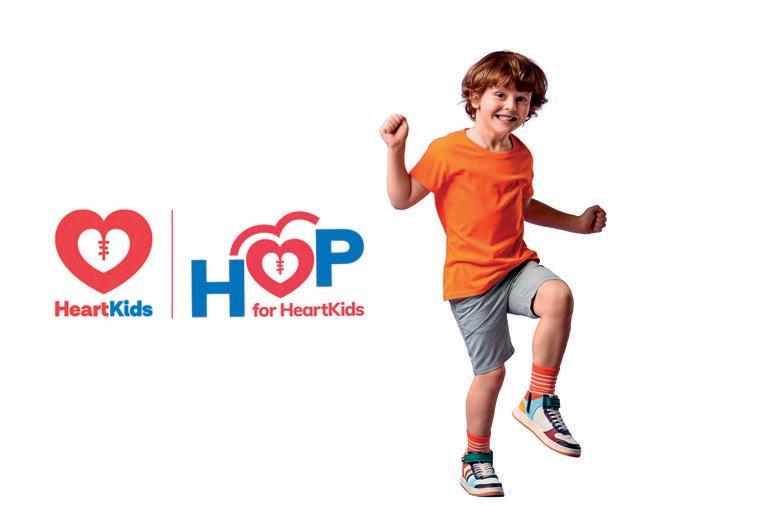
This year, it is launching Hop for HeartKids, a pre-school and primary school hopping challenge helping students gain healthy heart habits while raising funds for
Ms Sami Glastonbury, National Philanthropy and Development Manager at HeartKids, says it can be challenging for families when their child with a heart condition reaches school-age.
“ hen parents fill out medical forms as part of enrolment, schools immediately ask about existing conditions. Once parents reveal a heart condition, it can trigger alarm bells for teachers who aren’t informed about heart conditions,”
“That’s why we’re bringing Hop for HeartKids into schools and linking it to the Australian Curriculum – to give students a fun, healthy activity that also builds awareness and compassion. Chances are they’ll have a peer with a heart condition at some point, and this helps create a more inclusive and understanding environment.
“We want to make it engaging, raise awareness about HeartKids, and support families in feeling more comfortable talking about their child’s condition.”
Experienced teacher and professional coach Ms Jane Hamdorf from Hamdorf Consulting is working with HeartKids to implement the Hop for HeartKids program into schools. With more than 30 years of teaching experience across a variety of year levels, her professional journey has
encompassed various leadership roles within education. Her career has included teaching in multiple schools within the Catholic education system, most recently at St Francis Xavier’s Catholic school in Wynn Vale, South Australia.
Ms Hamdorf is currently developing comprehensive lesson ideas for HeartKids with a strategic, multidisciplinary approach.
She understands the challenges of introducing new programs in schools, which is why her core philosophy centres on making materials teacher-friendly.
Curriculum integration is a key focus. She’s not limiting the resources to the health curriculum but creating crossdisciplinary opportunities.
“HeartKids lesson plans are linked to multiple subjects including art, maths, English, health, PE, and science with its focus on the human body,” Ms amdorf says.
Currently targeting reception, or Prep, to year six, Ms Hamdorf sees broader potential. She’s incorporating diverse learning approaches, including literature-based activities like using New York Times bestseller Oliver Jeffers’ The Heart and the Bottle with accompanying educational e ercises.
Her lesson development emphasises engagement and real-world connections, with materials aiming to help educators easily integrate HeartKids’ message. She is particularly passionate about highlighting fitness’s broader impact.
“The importance of fitness in relation to not only heart health, but mental health is so important, especially in this screenage,” she says.
Her ultimate goal is creating resources teachers will enthusiastically adopt: “They can just pick this up and run with it.” EM


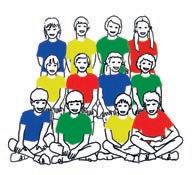
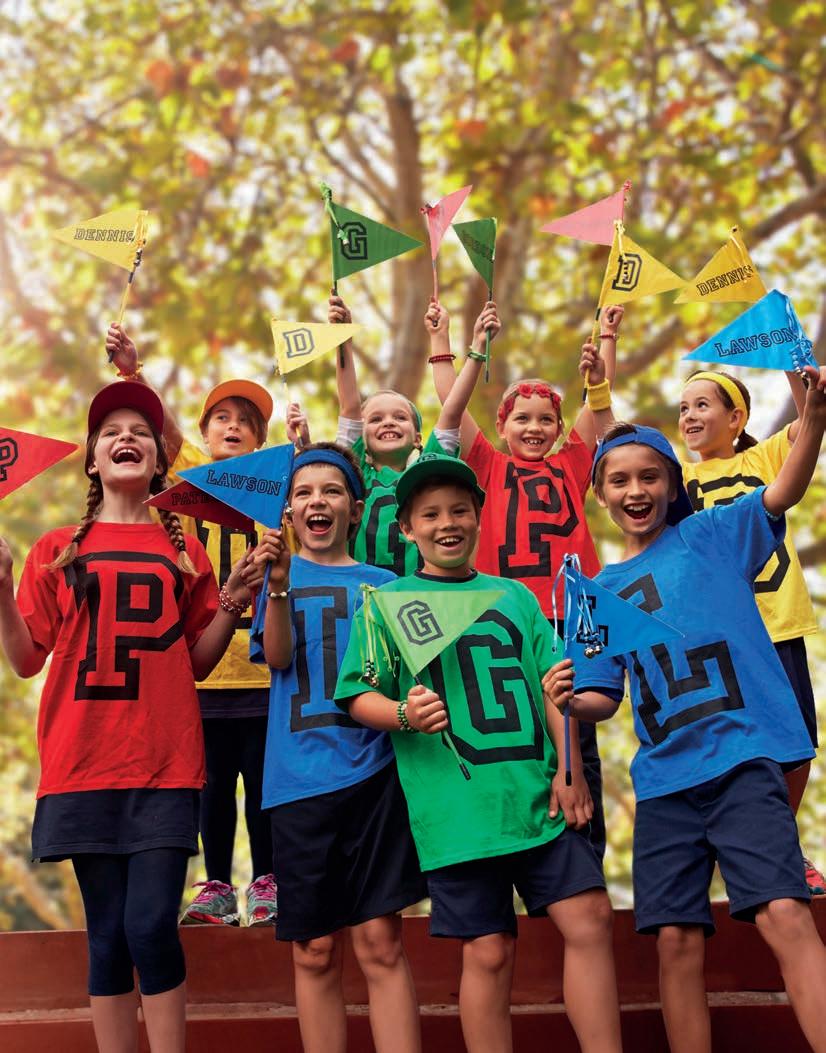

Early career teachers at Hambledon Public School are embracing a professional development model that is improving their teaching skills through collaborative, supportive classroom observations.
Primary-school teacher Ms Kaitlin Heggen represents a generation of teachers who graduated during the unprecedented challenges of the COVID-19 pandemic.
Her story, shared by Hambledon Public School Principal Ms Judy McEwen, illustrates the critical importance of supportive professional development for early career educators.
“Kaitlin did her last prac online during COVID,” Ms McEwen says.
This meant her initial teaching experience was fundamentally different from traditional training. When Kaitlin began teaching at Hambledon Public School, she was employed as a casual teacher, with colleagues knowing her primarily through virtual interactions on Microsoft Teams.
The transition was challenging. “She was ready to throw in her teaching career, because it wasn’t what she thought it was going to be,” Ms McEwen recalls.
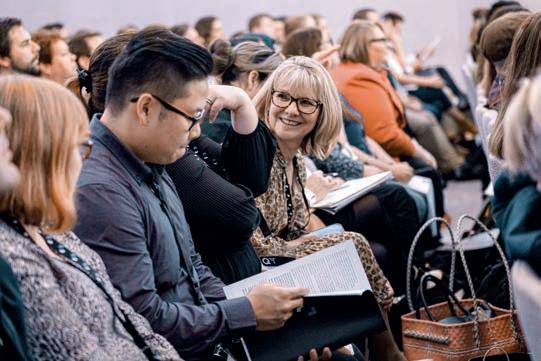
The isolation and disconnection typical of pandemic-era teaching threatened to derail Ms Heggen’s professional aspirations. Quality Teaching Rounds professional development became her lifeline, helping her make connections with colleagues, and reignite her passion for teaching.
Quality Teaching Rounds has been the focus of 15 years of research by the Teachers and Teaching Research Centre (TTRC) at the University of Newcastle. It is now being delivered to teachers across Australia for free by the University’s nonprofit social enterprise the uality Teaching (QT) Academy thanks to funding from the Australian Government.
The QT Academy provides teachers with training and support to implement this collaborative, evidence-backed approach to professional development where educators analyse, reflect on, and enhance their practice. Quality Teaching Rounds is applicable to all subjects, grade levels, teaching approaches and years of teaching e perience.
The program allowed Ms Heggen to observe teachers across different grade levels at Hambledon Public School, breaking down the professional isolation she had experienced.
She became a prominent advocate for early career teachers.
“She was interviewed when Federal Education Minister Jason Clare came to our school to announce the launch of funding for early career teacher professional learning,” Ms McEwen says.
From a teacher on the brink of leaving the profession to a confident advocate, Ms Heggen embodies the potential of supportive professional development.
From research to permanent practice
Ms McEwen has been Principal at Hambledon Public School for 12 years, bringing a wealth of experience from her previous role at Kurrajong Public School, a smaller semi-rural school where she held
her first principalship for eight years.
Hambledon, in Quakers Hill, Western ydney, has undergone significant changes during her tenure, with 650 students currently enrolled, down from a peak of 850, due to a new school opening in the area.
“We’ve got 60 kindergarten students, which is the lowest number we’ve had in a long time,” Ms McEwen explained. “We’ve got 112 kids in grade six, so two-thirds of our school is now in grades three to six.”
The school also has a diverse student population, including many non-English speaking students, which requires nuanced, culturally responsive teaching strategies.
Ms McEwen leads a staff of 60, including seven school learning support officers and office staff, spread across classes.
Hambledon’s involvement with the QT Academy began almost serendipitously.
“There was a call-out in our Department of Education’s newsletter that the University of Newcastle were looking for schools willing to trial the Quality Teaching Model,” she says.
Her prior exposure to Laureate Professor Jenny Gore’s work provided immediate context and interest.
“Jenny Gore spoke at a school I was previously at about the Quality Teaching odel when it was first released in ,” s McEwen says.
Her attraction to the QT Model is rooted in its ability to provide specific, detailed language around teaching practice.
The school’s QT journey began in 2019 when it participated in a large TTRC research project, initially as part of a ‘control’ group. That randomised controlled trial demonstrated for the first time that teacher participation in QT Rounds improves student academic achievement.
By 2021, Hambledon had received Quality Teaching Rounds training and was fully implementing the program.
“I thought, this program is a really great way to instigate professional learning within a school that’s around what we do,” Ms c wen says.
The QT Model’s ability to provide a common language around teaching practice was particularly appealing.
“The thing that always attracted me to the T odel was that it uses specific language
that explains to teachers this is what we’re actually doing,” she says.
The Model honours the complexity of teaching and articulates high quality practice through 18 observable elements.
Hambledon’s approach to professional development is inclusive and supportive.
“We don’t discriminate with our staff in terms of allowing them access to Quality Teaching Rounds,” Ms McEwen says. This means temporary and casual teachers have the same opportunities as permanent staff. The impact has been transformative.
“About 40 teachers have completed Quality Teaching Rounds, with 10 to 12 of those doing more than one Round.”

The feedback has been overwhelmingly positive.
“Teachers come out of the experience saying it’s probably the best professional learning they’ve done, because they get to go in and watch another teacher teach,” she says.
Collaboration across different grades At Hambledon Public School, peer observation has become a transformative professional learning strategy. Ms McEwen says the Quality Teaching Rounds process provides a unique opportunity for teachers to learn from one another across different grades and levels of experience.
“As educators, we tend to be insular in our classrooms, it’s generally just us in the room,” Ms McEwen says. The Rounds break down these barriers, allowing teachers to observe and learn from colleagues they might never have interacted with previously, ensuring diverse perspectives and genuine professional growth.
The coding process is particularly powerful, Ms McEwen says.
“The coding of the lessons is so meticulous in terms of driving that feedback rather than it being a ‘gut-feeling’ comment,” she says. Teachers engage in detailed, objective analysis that goes beyond personal impressions.
Early career and experienced teachers alike benefit from this approach.
“The beauty of the Rounds is the crosscollaboration. Our grade three teachers have learned something from a teacher who’s teaching kindergarten; teachers in our grade
Teachers come out of the experience saying it’s probably the best professional learning they’ve done, because they get to go in and watch another teacher teach.
Ms Judy McEwen
six classrooms have picked up something from observing a grade two teacher,” Ms McEwen says.
“Our early career teachers are probably the most powerful advocates of Quality Teaching Rounds, because they get to watch each other teach other grades.
“They get the opportunity, as I said, to mix with colleagues that they wouldn’t normally mix with, and the teachers are validated in what they’re doing. It’s a positive experience. In fact, I’ve got a couple of teachers that everyone says, ‘Can I be in a round with them because I want to see them teach a writing lesson’.”
Hambledon Public School was also part of a pilot project with the University last year, where the Rounds process was applied to assessment tasks which teachers found incredibly beneficial.
“I’ve never had a problem with getting teachers to put their hand up for Rounds, because they always come out of Rounds saying, ‘This is the professional learning you really want to do, because you’re watching other teachers teach’.” EM
National Education Summit in Melbourne is running two days of interactive free seminars for teachers delivered by experts in teaching and learning.
Two free seminar programs – Knowledge Centre and Classroom of the Future – at the National Education Summit in Melbourne (28-29 August) are providing a rare opportunity for teachers to collaborate with their peers, coming together face-to-face to share ideas and reinvigorate their passion for teaching.
Knowledge Centre
“Teachers can attend as many of the free seminars in the Knowledge Centre as they like and collect valuable professional development hours as they go,” says Ms Margo Metcalf, Creative Director of the International Expo Group, which organises the event. The Knowledge Centre will host 15 sessions across three major categories: inclusivity and equity in education; empowering students and building skills; and technology and digital literacy.
Standout sessions
Daniel Brown
Delivering an inclusive online school

28 August, 10:45 AM - 11:15 AM
A former commercial pilot turned principal, Daniel, and Saints College Deputy Principal, Richie McCann, will share their approach to delivering a truly inclusive online school, their strategy for delivering comprehensive support, and the tailored learning experiences designed to engage both students and teachers. Their commitment to creating a fle ible, student
centred learning environment is reshaping online education and providing life-changing opportunities for young people.
Evelyn Field OAM
Bully Blocking – a new look at an old problem


29 August, 1:45 PM - 2:15 PM
Evelyn Field OAM is a highly respected international authority on addressing school and workplace bullying, recognised for her expert guidance in helping bullying targets regain their confidence. According to UNESCO, one in three children are still being bullied at school. Evelyn will offer some new ways to manage bullying for schools, parents and targets.
Classroom of the Future
The National Education Summit in Melbourne will present a comprehensive program for educators to engage in the concept, share ideas, hear about new developments and be around what classrooms might look like in one to five years from now. The Classroom of the Future features 16 sessions across two major categories: innovation in education; and wellbeing and connection.
Standout sessions
Matt Pitman
This is the connection you're looking for: building the classroom of the future
28 August, 3:15 PM - 3:45 PM
Matt Pitman is the Head of Senior School
at Catholic Regional College
Caroline Springs, in Melbourne, and the author of The Connection Curriculum. In this session, Matt will explore how future classrooms can thrive through a focus on whole school connection. Drawing on The Connection Curriculum framework and its practical application in building relationships, fostering belonging, and creating meaning, Matt will share strategies to enhance student learning outcomes while promoting teacher wellbeing. Attendees will leave with actionable insights to create learning spaces that bridge the gap between academic e cellence and deep human connection.
Paul Campbell
Playful learning: unlocking engagement and wellbeing in future classrooms

29 August, 10:00 AM - 10:30 AM
Paul Campbell brings over two decades of experience in education, from classroom teacher to Assistant Principal.
In this talk, Paul invites educators and school leaders to imagine what classrooms could and should look like, where play, fun, and human connection shape the foundation of learning. This talk will highlight how fun and connection can unlock a new era in education, promoting wellbeing and engagement that lasts. EM
A modular construction that seamlessly connects to an existing building at a Melbourne primary school showcases Fleetwood Australia’s expertise in integrated architectural design.
A new two-storey modular building that joins with an existing science building is providing students at Our Lady’s Primary School in Surrey Hills, Melbourne with a contemporary learning environment, without weeks of noisy construction.
Built by Fleetwood Australia, which provides modular building solutions for schools, the prefabricated structure enabled most of the construction works to be completed off-site, significantly reducing on site disruption.
“This approach not only enhanced safety and accelerated project timelines but also delivered cost efficiencies without compromising on uality,” the company said.
Headquartered in Sydney but with manufacturing sites throughout Australia, Fleetwood was contracted through the Roman Catholic Trusts Corporation for the Diocese of Melbourne to deliver a full turnkey solution for ur ady’s rimary chool.
The project included demolishing an existing building, initial site set-up, off-site prefabrication of the two-storey General earning building, a detailed fit out and e ternal works. The pro ect spans , s uare feet across two storeys, incorporating modules including roof and deck modules.
“This comprehensive solution expands the school’s capacity with eight general learning areas, a large multi-purpose room, breakout areas, decking, stairs, lift, and accessible amenities,” the company said.
Utilising advanced technologies such as BMI Collaborate Pro for collaboration and the AEC Collection for design authoring, Fleetwood ustralia ensured precision in e ecution.

engineering certificates, was meticulously managed to meet regulatory re uirements. This approach minimised construction time and disruption to school operations, aligning with Fleetwood Australia’s commitment to delivering high uality educational facilities.
Solutions focused
From private schools competing in ‘infrastructure arms races’ to state governments committing substantial funds to rapidly construct new schools, the education construction sector is booming.
But, as Fleetwood Australia points out, labour shortages, costly materials, and bureaucratic hurdles all hinder progress.
“Schools work hard to instil pride in their students — and the right environment can make all the difference. That’s why more schools are turning to modern methods of construction to create high-quality, permanent spaces that reflect their values from day one."
Whether for Government, Catholic or Independent schools, Fleetwood Australia said its modern modular school buildings are the smart way to build classrooms that last.
“We use cutting-edge methods that let schools move beyond traditional builds — creating high-quality learning spaces with up to per cent less waste, greater energy efficiency, and modern materials that handle even the toughest ussie conditions. e build fast too, often meeting the tight deadlines of Term , ay ’ and we do it anywhere in the country,” the listed company said.
With the ability to build off-site, and
school holidays, working with Fleetwood ustralia offer numerous benefits, including cost-effective customisable designs that minimise disruption.
A growing problem
Whether for early learning centres, primary or secondary schools, Fleetwood Australia can assist school boards and leadership with any capital works pro ects.
“From the school leadership including principals and head of schools, to business and operational leaders such as school board members and directors, modular construction can meet their students’ needs as well as the business needs of the school.
" hen student numbers surge or new needs emerge, schools need fast, fle ible solutions. That’s why many are turning to smarter alternatives — like modular classrooms — that offer quality, comfort, and speed without compromise,” the company said.
Fleetwood is Australia’s largest locally owned and operated modular building solutions company, with more than years’ e perience in modular construction.
“We have the largest production capacity of any modular building company in Australia, with a national footprint of seven facilities across five states, a strong design team and a national innovation team." EM
To find out more about how Fleetwood Australia can build a modular building for your school, visit fleetwood.com.au.
It’s common today for students to bring water bottles to school, keeping them on their desk during class or in a communal cart for easy storage. But not so easy is trying to refill drink bottles from outdated troughs and fountains.
The principal of a 100-year-old primary school in Central Queensland was facing a dilemma: its water fountains were no longer fit for purpose.
Mr Matt Sahlqvist, Principal at Biloela State School, said the school’s existing water fountains were long overdue for replacement.
acceptable condition that would catch the attention of both the staff and the student body,” r ahl vist said.
stablished in , the school in Biloela, a rural town in the Shire of Banana, has many students in years rep to .
“In our endeavours to educate our students about staying hydrated during
to school,” r ahl vist said.
But it was proving difficult for students to fill their water bottles from old troughs that were fountain only.
“In this present day, it seems to me that water bottles have become almost a fashion accessory. hat better way to encourage students to fill up those
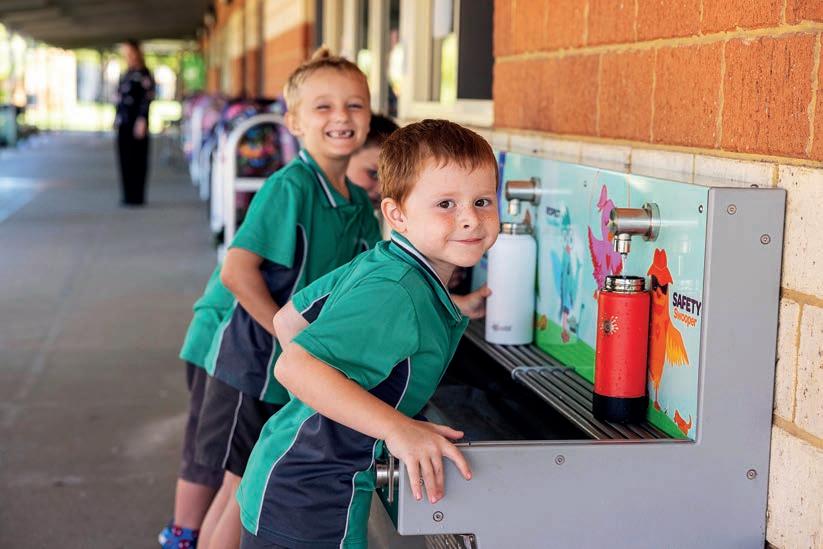
Students are enthusiastic about refilling their water bottles at such a colourful unit that they have had input into.
Mr Matt Sahlqvist
Biloela State School turned to Civiq, a leading manufacturer of Australian-made drinking water fountains and refill stations for schools and local councils.
The family-owned company with more than 30 years’ manufacturing experience originally designed wayfinding signage until an existing customer – a council on Sydney’s Northern Beaches – made a unique request: it wanted a way for its community members to easily access drinking water on public walking trails, and cut down on plastic waste.

the company said.
“ e’re reshaping how schools think about hydration, sustainability, and
The re uest sparked the first ivi designed water station – the uafil FlexiFountain – which has now evolved to an e tensive range of products.
“ e saw the positive impact sustainable hydration makes in communities. e knew there was a similar need in schools,” the company said.
Its range of robust, low maintenance hydration solutions designed specifically for schools are also helping to foster student ownership as schools can personalise their drinking station with artwork.
or r ahl vist, ivi ’s ability to incorporate artwork with functionality was a win win.
“ aving a bottle refill as well as a drinking outlet is fantastic and provides easy access to clean and healthy water to all,” he said.
“Our school captains were involved in the choice of the final artwork. s a staff, we have found that the students are enthusiastic about the fun of refilling their water bottles at such a colourful unit that they have had input into.”
hether installed in the playground, sports fields, libraries, T labs, classrooms or common areas, Civiq’s water stations are making it easier for students to stay hydrated.
“It is difficult to fill water bottles from old troughs. chools are upgrading their troughs
their staff,” he said. unding can be a hurdle for many schools, ivi said.
“That’s why we list the best grant opportunities for councils, community groups,


Choice of materials can make or break – quite literally – an outdoor playspace. Getting it wrong can lead to warping and corrosion, but getting it right can ensure a functional and durable playground that looks the part.
Playgrounds are a cornerstone of childhood experiences at school, fostering physical, cognitive, and social development amidst laughter and fun.
Selecting the right material for these spaces is crucial for schools aiming to provide a durable, safe, and visually appealing playground. Enter WillPlay’s timber-look TreeHouse Systems – an innovation that marries the classic charm of timber with the strength of more robust materials.
The magic of timber-look aluminium Imagine combining the charming aesthetics of timber with the sturdiness of marine-grade aluminium – it’s now possible with WillPlay’s timber-look aluminium posts and battens.
Crafted to resist decay, weathering, and splintering, these components lend an enduring strength to playgrounds in versatile climates – including challenging coastal conditions.
ome of the key benefits of timber look aluminium include:
•Strength and lightness: aluminium is lighter, stronger, and straighter than real wood, making building efficient and
preventing warping over time.
•Environmental responsibility: aluminium is 100 per cent recyclable with VOC-free coatings and leadfree finishes, meaning a smaller environmental footprint for your school. Lightweight materials means reduced environmental impact in shipping and handling.
•Fire, pest, and corrosion resistance: aluminium is non-combustible, impervious to insects, and offers excellent corrosion protection –an ideal material for any school environment. Every WillPlay system meets the requirements for use in harsh coastal conditions.
•Practicality: its non-porous nature ensures aluminium doesn’t swell, grow mould or mildew when exposed to harsh conditions, thus requiring minimal maintenance.
Composite wood panels: the future of playground material
WillPlay’s composite wood panels are a superb alternative for schools that love the beauty of natural wood but require a more enduring solution. Designed to resist
decay, pests, and moisture, these panels mimic the warmth and texture of timber while being almost maintenance-free.
ome of the key benefits of composite wood panels include:
•Aesthetic versatility: available in different colours, these panels can accommodate diverse design needs while maintaining the warm timber aesthetic.
•Environmental sustainability: made from recycled materials, composite wood panels not only stand the test of time but also reduce landfill waste.
•Safety: their high resistance to slipping makes the panels especially safe for children, even in damp environments.
Adopting WillPlay’s timber-look materials for your school playground is an investment in longevity, sustainability, and timeless aesthetic. You aren’t just choosing a product; you’re embracing an ethos synonymous with design excellence and respect for nature.
By selecting timber look materials, your school can create a long-term legacy, an outdoor space that generations of students can enjoy, appreciate, and remember fondly. EM

A cost-e ective and
refillable whiteboard marker that doesn’t fade within days of taking it out of the packet is a win-win.
Whiteboard markers that produce faint lines or dry out quickly is the bane of many teachers lives, inconveniently bringing a rapid fire brainstorming session to a sudden halt or disrupting a train of thought while explaining a complex math equation.
Their shared frustrations have led one company to seek a solution.
For over 100 years, Pilot Corporation has been guided by its principles of innovating and creating beautiful writing instruments that provide a writing experience like no other.
eusing products by refilling is one of the key pillars of Pilot Pen Australia’s
sustainability approach.
“It’s about avoiding or eliminating plastic waste by extending the life of plastics and reducing the use of raw materials. We’ve designed a quality, Japanese product range of writing instruments that can be refilled many times over for both economical and sustainable effectiveness,” the company says.
With more than 2,000 products in its portfolio, Pilot Pen Australia has the right writing tool for almost any need.
For teachers looking for a reliable whiteboard marker, the V Board Master




ticks all the boxes.
asily refillable, the Board aster is a pure liquid ink whiteboard marker with high visibility and advanced technology, ensuring ink is used to the very last drop.
“I’ve been using Pilot V Board Master markers in my classroom for the past year, and they’ve made a significant difference,” says Mr Mark Eatough, a primary school teacher in Belrose, Sydney.
“The colours are vibrant, they write smoothly, and they erase cleanly. I also love that I can refill them – it’s much more economical and better for the environment.”
Designed to overcome teachers’ frustrations with markers that produce faint lines or dry out quickly, the V Board Master has three key features.
“Our markers are available in four vibrant colours – blue, green, orange and red – plus black. Teachers can make their lessons pop with rich, bold ink that’s easily visible from the back of the room,” the company says.
“They also have consistent ink flow, which means smooth, skip-free writing from the first stroke to the last.
“They also have refillable cartridges. Schools can save money and reduce waste by refilling their markers uickly and easily with no mess.”
The V Board Master also comes in two tip options, Bullet or Chisel.
To extend the life of whiteboard markers, ensure they are tightly capped after use to prevent the ink from drying out. Store them horizontally to maintain ink consistency and flow.
V Board Master are available from office product suppliers. chools can find their local retailer at pilotpen.com.au. EM
House systems exist in most primary schools but represent an often-overlooked opportunity. When strategically reimagined, they have the potential to transform student engagement, drive leadership, and lift school performance.

With three children each of similar ages attending the same primary school, Ms Petrina Jones and Ms Karen Dimattina’s paths crossed frequently. But what began as casual conversations about their children’s experiences soon evolved into something more. Their connection wasn’t just about idle chat at school drop-off and pick-up – they discovered a mutual scepticism toward the viability of a traditional House system
functioning effectively in this day and age.
While Ms Dimattina’s sporty children thrived in competitive environments, Ms Jones’ more creative children felt disconnected from House events, which typically revolved around sporting pursuits.
These conversations became the catalyst for their collaborative vision which ultimately led to the creation of Our House Spirit, a program that utilises a more modernised

version of the traditional House system, one that is well-matched with the needs of present day students and fulfils the targets of today’s primary schools, as the vessel to improve student outcomes through enhanced engagement, community connection, purposeful leadership and the instigation of a strong sense of fellowship and belonging.
“We used to talk a lot about the traditional House system and how archaic it was in this day-and-age of inclusiveness and social behaviours,” Ms Dimattina says.
Traditionally, House systems have overwhelmingly favoured athletic students, which has created significant challenges for children with diverse interests.
Swimming, cross country, athletics, tabloid sports – House days focused on sport as the singular interest and rarely celebrated art, music, drama, singing, dancing, maths, reading or writing.
“It is unfortunate that a percentage of primary students don’t look forward to House days at school. Some experience anxiety about being expected to participate in competitive events,” Ms Jones says.
The pair decided to act, founding Our House Spirit in 2012. Their professional backgrounds provided the perfect foundation for reimagining the House system. Ms Dimattina, with experience in corporate training, and Ms Jones, coming from advertising and production, saw an opportunity for meaningful change.
Extensive research revealed a critical insight: the most successful House systems are student-led.
“We saw an opening to incorporate a student leadership program into our revamped House system that would have a positive flow on and effect throughout the whole school,” Ms Dimattina says.

Their vision was to create what they termed an ‘effervescent House system’ – a vibrant, inclusive framework that would engage students across multiple interests.
“Our reimagined House system not only benefits students by offering a variety of activities,” Ms Jones says, “it also helps schools reach their targets around student voice, whole school engagement, leadership, positive social behaviours, and respectful relationships.”
Progressively build student leadership Ironically, Ms Dimattina says, many school Houses are named after a celebrated sportsperson, like Cathy Freeman, or Donald Bradman. Often, students don’t know who those sporting ‘heroes’ are, or why the House is named in their honour. Naming Houses after sporting identities does not offer something that all students can connect to.
“And Houses should be for everyone,” Ms Jones states. “Why should only the sporty students experience a strong sense of connection and belonging? What about the creative kids?”.
“If we visit a school and find their ouse names have a strong sports theme, we create an identity around those names based on those people’s values, such as persistence, or resilience, so it takes the focus away from being a ‘sporty’ House and adds values that other students can relate to,” Ms Dimattina says.
Targeting engagement, leadership, and wellbeing, Our House Spirit’s effervescent House system model enhances every student’s overall learning experience by manifesting a school environment in which students can truly excel. The approach isn’t just about creating fun activities, but about developing a comprehensive framework for student growth.
As part of their research, Ms Dimattina and Ms Jones looked at how secondary schools
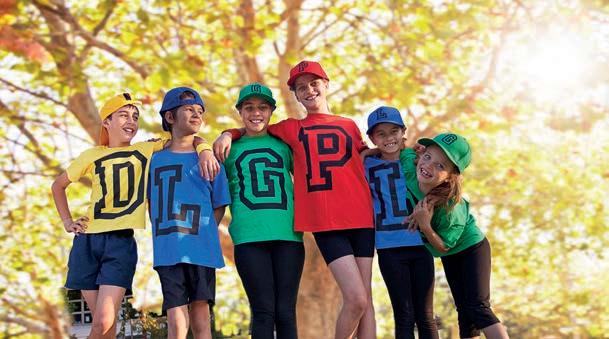
structure their House systems.
“Some hire large auditoriums to run their House music and drama competitions – and they are led by 17 and 18-year-old students. We researched how they run their House systems, and we developed it into a program that a 12-year-old could run. The students are completely empowered. Everything’s structured with them creating it themselves, and the impact is way bigger because of that,” they say. Their program strategically enhances school-wide positive behaviours and introduces and builds leadership skills from prep to grade six, with each level introducing age-appropriate concepts. From community understanding in prep to strategic problem solving in grade six, the system creates a progressive, inclusive approach to student development.
“When we go into a school, we deliver workshops with the student leadership team to create innovative and inclusive House activities,” Ms Dimattina says.
Limited by how many schools they can physically get to, they’re now expanding their reach with a larger online presence, so more schools can unlock the potential of their existing House system.
“Our online House Library features numerous House activities for each year level, whole school House events, and student leadership workshops – schools can run these workshops repeatedly with a different outcome each time,” Ms Dimattina says.
“For schools that want to let their student leaders log in and find an activity that already has an event kit, they can access a series of videos and worksheets to create a particular activity.”
“Also, each House event and workshop is accompanied with ready-made lesson plans for schools to use in their student leadership meetings,” Ms Jones says.
“These plans are a great time-saving resource for teachers and help them instil the activity topic and generate productive leadership meetings.”
House Spirit Day, where students create a whole-school two-hour House event, is Our House Spirit’s signature workshop.
“We get a lot of feedback from schools about the inclusive environment it creates, how many different types of interests are brought into the one event day,” Ms Jones says.
While schools can opt to purchase individual online workshops, or activities, the best value for money is a House Library membership, which provides access to all Our House pirit’s resources.
“Our membership model gives schools the ultimate outcome: an effervescent House system that enhances every student’s overall learning experience. A membership is also more cost-effective and builds ongoing engagement, because schools cannot build an effervescent House system in one year alone,” Ms Dimattina says. “It’s an ongoing process that changes depending on the students leading it that year.”
This philosophy underscores their commitment to fle ibility and student empowerment.
What began as conversations between two parents about the differing interests and levels of engagement of their children has evolved into a comprehensive educational approach.
Our House Spirit represents more than a program, they say, it’s a reimagining of how schools can create meaningful, inclusive communities that celebrate every student’s unique strengths and ultimately improve student outcomes. EM
Visit www.ourhousespirit.com.au for more information.
Whether designing school drop-o and pick-up signs, house flags or marching band banners, one company understands how to create ‘school-tested tough’ products that are also cost-e ective.
Quick turnaround on custom-made signage and displays is drawing schools in their thousands to a Melbourne-based company designing and manufacturing everything from banners to toilet signs emblazoned with the school emblem.
Edusign, founded by graphic designer Ms Larysa Kemin, offers schools 40 product categories, many modified based on feedback directly from schools.
“Schools have advised us on solving critical issues they found from previous orders from us, and other suppliers,” she says.
Business manager Mr John Waugh says dusign has stood firm on uality and created products with unmatched attention to detail.
“When we look at a banner or sign, we know from experience the shortcomings or mistakes that are not relevant in the business world are critical when supplying those products to schools,” he says.
“For example, heavy duty vinyl fence banners that don’t have stainless steel eyelets will rust and create rust lines on the banner. If they are oversize in relation to the material being used, they will sag and age within a very short time.”
Edusign’s attention to detail coupled with an understanding of how its products are used form part of a uni ue service, as is its offer to provide artwork free-of-charge to schools.
“Our marching banners come with a 10year warranty. We understand they need to be versatile enough to take apart to transport but strong enough, component wise, to be put back together again hundreds of times without damaging it,” Mr Waugh says.
“We know from experience that a portable A-frame sign, which schools often
put out for ‘kiss and drop’, needs to have wheels as it is cumbersome and awkward to carry otherwise.
“ ur teardrop flags are always double sided so you see the same message, regardless of which way the flag is facing. e always uote and deliver a double sided flag – even at the risk of not receiving an order because a single sided flag is cheaper elsewhere,” he says.
Counting schools such as Geelong Grammar and Xavier College among its customers, dusign’s fast, efficient production – from initial design to final delivery – is finding broad appeal across the country.
Located in Ringwood in Melbourne and Pendle Hill in Sydney, Edusign delivers Australia-wide.
know things change.”
He continues: “They might be set on a design and then they are informed that their school logo will be changing, or they are preparing for next year’s budget options. We are with them for the long term, and as most of our business is repeat business, we learn from them and they have our trust. We also appreciate and value their feedback.”
Mr Waugh says Edusign’s existing school customers often contact the business with a specific re uest.
“They say, ‘Look this is just an idea that will never fly but we would like to see what this banner or sign would look like’,” he says.
“Stories like this are everyday events and if we make their day-to-day easier, then when it comes time to allocate the work, we know we will be in the mix because of

Discover how Edusign can increase the lifetime visibility of your schools’ banners, flags and signs. For more information, email sales@edusign.com.au, phone (07) 3041 4081 or visit edusign.com.au.
Felton Industries’ revolutionary Avoca range transforms outdoor spaces with aluminium seating that mimics a wood-like aesthetic, delivers unmatched durability, and champions accessibility for every user.
Departing from its traditional approach to outdoor furniture design, Felton Industries is breaking new ground with the launch of its Avoca seating range.
Named after the picturesque Avoca Beach on New South Wales’ Central Coast, the range represents a significant leap forward in design and functionality.
“This range is a revolutionary step for us,” explains Mr Drew McKinnon, Head of Marketing at Felton.
Unlike Felton’s previous seating products formed by a 250mm wide aluminium plank, the new Avoca range features sleeker, more aesthetically pleasing elements.
The range’s core innovation lies in its aluminium extrusions, now reduced to 70mm x 30mm. The result is a product that closely resembles traditional wooden benches but offers superior durability and performance.
to bench seat angles, backrest design, and table heights.
“We’ve been conscious of making sure we are DDA compliant,” Mr McKinnon says, ensuring the furniture is accessible to all users.
DDA compliant refers to compliance with the Australian Disability Discrimination Act 1992, which aims to ensure that people with disabilities have equal access to buildings, services, and facilities.

Sustainability is at the heart of the new range. The aluminium used is low carbon, with a production process that saves up to 45 per cent of electricity. The extrusions are powder-coated using what Felton believes is an industry first techni ue, creating a textured wood-like effect that doesn’t compromise on durability.
“We’re looking at bolstering our range into more markets and catering for more people,” Mr McKinnon explains.
The range addresses a critical market need, particularly among architects designing school infrastructure who often specify high-end outdoor seating.
The Avoca range is comprehensive, featuring over 120 different products. This includes bench seating in three sizes (1800mm, 2000mm, and 2400mm), table settings, and sheltered seating options.
Colour options include a dark oak and Western Red effect, with custom powdercoating available for legs and armrests.
The company’s commitment to sustainability is further underscored by its recent ISO 14001 environmental accreditation.
“What we’re offering is an aesthetic of
wood, but with the durability of modern materials,” Mr McKinnon explains. The range meets the growing market demand for outdoor furniture that looks beautiful, performs exceptionally, and requires minimal maintenance.
For schools looking to upgrade their outdoor spaces, the company says its Avoca range offers a compelling solution. It combines aesthetic appeal, durability, accessibility, and environmental consciousness in a single product line.


Mr McKinnon says inclusivity was a key design consideration. The products are meticulously crafted to meet disability access standards, with careful attention

To learn more about the Avoca range, call 1800 834 016, email sales@felton.net.au or visit felton.net.au

Launched on 28 May, the range promises to set a new standard in outdoor furniture design. As Mr McKinnon puts it, “We’re not just selling furniture – we’re helping shape outdoor spaces.” EM



CEO Carol Ireland explains how Epilepsy Action Australia is delivering professional learning sessions to educators to better support students with epilepsy.
Having worked in the sector for over 18 years, I have gained valuable insight into the challenges faced by children with epilepsy. I have witnessed firsthand the profound difference that awareness and education can make in improving their quality of life. In Australia, approximately one in 200 children live with epilepsy1, that’s likely at least one child in every school or childcare centre. Despite its prevalence, epilepsy is often misunderstood, leaving children isolated and at risk of stigma.
Educators and childcare providers can feel unsure or unprepared when it comes to supporting a child with epilepsy. Currently, only a small portion of schools across Australia have participated in Epilepsy Action Australia’s training courses for epilepsy and sei ure first aid. ith over , schools nationwide2, imagine the difference it would make if every educator had the knowledge and confidence to create a safe and supportive space for these children. By empowering educators with appropriate training, we can create a world where children with epilepsy feel supported and can thrive.
Epilepsy Action Australia has been on a mission to address these challenges, by offering training courses to schools and childcare centres across ustralia. orking with epilepsy specialist registered nurses and other professionals, we have developed comprehensive online training programs tailored to the needs of educators and school staff, and offer unique materials delivered in an interactive way to enhance skills and knowledge absorption. Through training courses like Epilepsy Essentials
and Emergency Medication, educators and carers can gain invaluable insights into epilepsy management and sei ure first aid, equipping them to create safer and more supportive classrooms.
Courses are modelled on real-life scenarios, which increases the engagement in learning, whilst also increasing the likelihood of transferring skills learned in training to real-world tasks. One powerful example is the Emergency Medication course. For students who require emergency medication to stop seizures, this training and competency assessment by an Epilepsy Action Australia specialist epilepsy nurse can literally be lifesaving. Educators and childcare providers will learn not only how to administer medication, but also the critical skills needed to respond calmly and effectively in emergency situations.
Ms Genevieve Dennis, Principal of adstow orth ublic chool in , shared how Epilepsy Action Australia has made a meaningful impact on her school community.
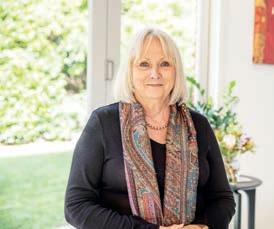
joined the preschool.
“ e felt it was crucial to complete this training regardless of whether we had a child with epilepsy in our care. The trainer was excellent – knowledgeable and thorough, providing clear explanations that were both informative and practical,” she said.
“Epilepsy Action Australia delivered professional learning sessions to staff at the school to better support our students with epilepsy. These sessions included valuable input from staff and parents, as well as a thorough review of our Epilepsy Care Plan. This collaboration has enhanced our school's capacity to provide tailored care and ensure a safer, more supportive environment for students with epilepsy.”
Similarly, Hallett Cove Preschool Director and teacher Ms Kate Foreman said her team undertook epilepsy training with Epilepsy Action Australia after a child with epilepsy
Epilepsy training is a vital investment in our children’s future. For a small cost, we can significantly improve their chances for a successful, fulfilling life by e uipping schools and childcare centres to provide the support they need. I encourage schools, educators and childcare providers to explore Epilepsy Action Australia’s training courses as a valuable addition to their ongoing professional development this school term.
The depth of this training course will e uip them with the confidence and essential skills to respond effectively, especially when a child with a diagnosis of epilepsy is enrolled. Visit https:// learn.epilepsy.org.au/w/events for more information on the training courses. EM
References:
1. The Royal Children's Hospital Melbourne. About Epilepsy. Accessed 11 Sept 2024. https://www.rch.org.au/neurology/ patient_information/about_epilepsy/
2. Australian Bureau of Statistics. Schools. Accessed 18 Nov 2024. https://www.abs.gov.au/statistics/people/education/schools/ latest-release
Each person contributes to a school’s climate, making us all Ministers for Climate Change, writes Dr Stephen Brown, Managing Director of The Brown Collective.

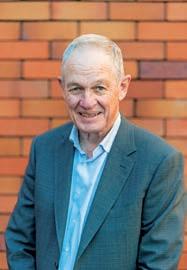

Positive, toxic, poor, nurturing – these are all prefi es that are used interchangeably to describe organisational culture or climate. They apply to organisations ranging from political parties and international sporting teams, to government departments and schools. uch ill disciplined and ill informed commentary does add to the difficulty for school leaders in gaining clarity around a contested broad concept of organisational culture.
learn as they learn to navigate and connect with groups e pressed in the workplaces as teams, peers and factions.
Dr Stephen Brown is the Managing Director of The Brown Collective, focused on the formation of educational leaders and partnering with schools, networks and system to enable sustainable impact. The organisation reflects both his collective experience over 40 years in policy, strategy and leadership development – and that of the remarkable global network he has developed during this career.
In the conte t of schooling, culture and climate are often used interchangeably without definition and distinction to describe arguably two of the most important aspects of enabling a positive and productive school. lthough there is an acceptance of the importance of school culture to enabling school improvement, there is no agreed definition or construct of school culture and its distinctiveness or relatedness to school climate. ithout such nuance, it is challenging to identify how school cultures can be augmented to have a positive impact on student learning outcomes , chool Improvement Tool, . chool culture and climate are distinctive, different but ine tricably linked concepts. These concepts are what can be described as on the two sides of the same coin’ art, , . n organisation’s culture is typically described as “the way things are done around here”. ulture is also about belonging, connection and being in relationship with others. It is “a social narcotic of which all of us are addicted”. e feel good when we belong or relate to a group and or tribe. It is an organisation’s anthropology – a system of interactions that governs how work gets done uron, , . dgar chien notes that culture is essentially a social indoctrination of unwritten rules that people
hat are the components of any school culture any school leaders struggle when they try to describe the various elements of a positive school culture. It’s tricky to define and parsing its components can be challenging hafter, , . chool culture can be described as the set of shared beliefs, values, and attitudes that shape interactions and behaviours within a school community. rawing on the foundational work of chein and influenced by the perspectives of ivian obinson , an oyle , iona oberston , and iobhan c ale , these appear to be the fundamentals of organisational culture applicable to a schooling conte t
•Values and Beliefs: the core principles that guide the school’s mission and vision. In the case of a atholic chool founded on a certain charism such teachings would be and must be foundational to the culture of that school. ow it then animates these will be through various mediating factors primarily stimulated, facilitated and stewarded by leadership.
•Norms and Expectations: these are the unwritten rules in relation to how members of the school community are e pected to behave. or e ample, attendance as school social, sporting and cultural functions and activities.
•Symbols, Rituals and Artifacts: displayed and deified things which give an insight or eyes to the soul of a school. These could include school honour boards, acknowledgment of the various community and cultural groups through ceremonies. school’s culture does shape long term

behaviours and beliefs within its ecosystem, influence decision making approaches, decisions made, its identity and the way in which it is seen by various stakeholders.
What then is a school’s climate?
working definition of a school’s climate is the current atmosphere or operating environment of the school, as e perienced by students, staff, guests and others would have a felt e perience or a form of interaction with the people at the institution. This could range from various forms of communication, workplace relations between staff, uality of leadership and simply, how it “feels” to be associated with and to work in that school. positive school climate is typically characteri ed by respectful relationships, a sense of belonging, and a safe environment. onversely symptoms of a negative, to ic or poor school climate are bullying, lack of student voice, low staff morale and a disengaged community.
There appears to be consensus that school climate relates to individual
perceptions and beliefs and the present or immediate , chool Improvement Tool, . hat can leaders or schools do to nurture school climate ach school has a uni ue culture and prevailing climate, so any strategy adopted needs to be enabled after careful diagnosis. uch an appraisal should be on behalf of enabling a positive and productive learning environment for everyone.
The legendary band, rowded ouse in their iconic hit song, Weather with You, evoke the importance of individual agency, mindset, responsibility, reciprocity and accountability for the collective, e isting climate of any school and indeed organisation. In essence the song uses the concept of weather as a metaphor for a personal emotional state, highlighting that a person’s internal feelings are a constant companion, and e ternal changes won’t necessarily alter their overall emotional state. In general, such an evocation reminds everyone that they are responsible for creating the around them – its energy, its emotional ualities, its positivity or negativity, and its happiness and or indeed its misery.
very person who connects with any school is a inister for limate hange’. hen everyone accepts this important portfolio, then a school environment is created in which everyone thrives. chool climate is not passive – it is something by their practices, engagement, mindsets, energy, resilience and mindfulness that each person creates.
school culture is influenced by the character of the individuals that make up its collective. Individual character is implicit and sub ective, and stems from an individual’s values, principles, beliefs and history.
The etymology of the work culture’ is from the atin word ultus’ meaning to care’. ark Twain notes that “ verybody talks about the weather, but nobody does anything about it”.
chool leaders need to apply continuous care to a school’s culture and climate. ithout attention and nurturing climatic conditions, shadow cultures will emerge and impact any school. chool climate cannot be denied EM
International speaker and best-selling author Brett Salakas provides a preview of his keynote address at this year’s National Education Summit.
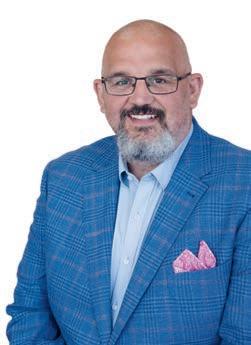

There’s a reason Homer’s Odyssey is still relevant thousands of years later: it’s the ultimate story of a hero’s journey, full of storms, monsters, and unexpected detours. And right now, I think every school leader in Australia is on their own odyssey – only this time, it’s not mythical. It’s the voyage to navigate rtificial Intelligence I in education.
That’s why I’ve themed my keynote at this year’s National Education Summit – both in Brisbane and Melbourne – as An AI Odyssey: Navigating the Future of Education. In true form, I’ll be on stage in a toga yes, really as ‘Brett Odysseus’, inviting leaders to set sail with me through the uncharted waters of AI.
In Homer’s myth, Odysseus spends years trying to get home to Ithaca after the Trojan War. He’s blown off course by storms, delayed by distractions, and has to battle some pretty fierce monsters along the way. ound familiar? Right now, many schools are stuck in a similar cycle – unsure how to integrate AI, overwhelmed by choice, or paralysed by fear of the unknown. The problem? We don’t have years to waste. AI is moving fast, and education can’t afford to drift aimlessly while the world changes around us.
Why this journey matters
Mr Brett Salakas, HP Education Ambassador, is a global keynote speaker, best-selling author of A Mammoth Lesson: Teaching in the Digital Age, and founder of #aussieED. A leading voice on LinkedIn in K-12 Education, Mr Salakas was named Australia’s Most Influential Educator (2024) and recognised globally as one of education’s top 100 leaders.
School leadership is always a journey, but AI has added a whole new dimension. The stakes are high. If we get it right, AI can transform everything from administrative efficiency to learning outcomes. Get it wrong, and we risk making costly mistakes – whether it’s rolling out flashy tools that don’t stick, mishandling student data, or letting fear of change hold us back altogether.
The key message of my session is simple: we need a map. We need to know our ‘true north’ and set a course that’s strategic, intentional, and human-centred. The goal isn’t
to let AI take over the ship; it’s to make sure we, as leaders, are confidently steering it.
Facing the monsters

In Odyssey, Odysseus faces all kinds of challenges – Scylla and Charybdis, the Cyclops, the lure of the Sirens. In the AI journey, our monsters look a little different, but they’re no less dangerous.
One monster I see too often is overreliance. There’s a temptation to throw AI at every problem, assuming it’s a magic wand. But AI should be a tool, not a crutch. If we’re not careful, we risk deskilling our teachers or even undermining the human relationships at the heart of good learning.
Another storm to watch is data privacy. AI systems rely on huge amounts of data – but with that comes the responsibility to safeguard student information rigorously. Without robust privacy policies and digital hygiene, schools can end up in very murky waters.
Then there’s what I call the shiny object syndrome. Schools get dazzled by the latest

AI is moving fast, and education can’t a ord to drift aimlessly while the world changes around us.
Mr Brett Salakas
I tool or app, only to realise it doesn’t fit their real needs or strategic goals. The result? Money wasted, teachers frustrated, and students left no better off.
Finding the treasure
But it’s not all storms and sea monsters. There’s treasure to be found, too – and it’s often in simple, practical wins. One of the easiest and most impactful places to start is reducing teacher admin workload. AI tools that help with lesson planning, report writing, or analysing assessment data can save hours – hours that teachers can reinvest in what matters most: their students.
I’m especially excited to showcase tools like Adobe Acrobat AI, which transforms
ideas – they’re practical, here-and-now solutions that school leaders can start trialling tomorrow.
Keeping humanity at the helm
ne thing I’ll hammer home in my keynote and something I’m deeply passionate about is that AI should never be seen as a replacement for human connection. It’s there to amplify, not replace, what teachers do best. No 15-year-old masters algebra because a computer screen tells them to. They do it because their teacher – someone they trust and respect – sits with them, explains the concept, and encourages them when it’s tough.
This is where leadership comes in. It’s up to us to ensure that AI strengthens, rather than erodes, the humanity of education. We need frameworks that balance innovation with empathy, and policies that put student wellbeing at the centre of every decision.
Why the National Education Summit is a must-attend
The National Education Summit is where Australia’s most passionate educators come together to share, learn, and lead. This year’s AI in the Classroom stream is essential for anyone who wants to stay ahead of the curve – not just keeping up with change, but actively shaping it.
Whether you’re a school leader, teacher, or aspiring changemaker, you’ll find the tools, ideas, and connections you need to move forward with confidence.
Your call to action
Whether you make it to the summit or not, I challenge every reader to reflect hat’s your AI map? Do you have a clear strategy – or are you hoping to stumble your way to Ithaca? The time to get serious is now. Start small, start smart – but start something. Because if we, as school leaders, don’t steer the ship, someone else – or something else – will. I can’t wait to see you at the summit. Toga and all. EM
Applied linguist and qualified teacher Dr Carly Steele discusses how educators in early childhood education can bring children’s languages into the classroom through play-based approaches.
Children possess a right to play. This is recognised internationally in the United Nations Convention on the Rights of the Child (1989) and supported by the Early Years Learning Framework for Australia.
Yet, increasingly, play-based approaches to learning are being pushed out of early years classrooms in favour of explicit and didactic approaches, much to the dismay and concern of early childhood educators and researchers.
lay based learning has many benefits that are comprehensively described in the research literature, including:
•Play supports social, emotional and cognitive development.
•Play promotes oral language development as well as literacy development, eg. reading, writing and viewing.
•Play improves linguistic comprehension, vocabulary learning and oral narrative competence (i.e. the ability to generate stories).
From this list it is clear that playbased learning and language and literacy development are mutually supportive.
What does this mean for Australia’s culturally and linguistically diverse population, and how can play-based learning support those with diverse language backgrounds other than English?
This is a question that I have had the privilege of exploring with a research collective spanning four Western Australian universities: Grace Oakley (UWA), Christine Robinson (ECU), Toni Dobinson and Sender Dovchin (Curtin) and
Wendy Cumming-Potvin (Murdoch).
Like play, children have a right to speak their own languages, and a right to education in their own languages that is recognised internationally by the nited ations.

In early childhood education settings, educators are looking for ways to be more culturally and linguistically inclusive in their learning and teaching approaches.
Translanguaging Pedagogies are one approach that is being advocated globally.
Translanguaging recognises that multilingual learners will use their languages and mean-making resources together, in a fluid way, to aid and promote communication.
Translanguaging pedagogies build on this natural predisposition for the planned and deliberate use of children’s multilingual repertoires in classroom contexts to support learning.
Translanguaging pedagogies can be implemented through play-based learning approaches. However, as found in a systematic review we conducted, these two pedagogies are rarely used together to promote learning in culturally and linguistically inclusive ways.
We have, therefore, proposed a new framework: Playworld Translanguaging that combines these two approaches. Playworlds is one contemporary model of play-based learning. In our recent conceptual paper, we describe the shared characteristic of Playworlds and Translanguaging Pedagogies, they are:
•Rights-based and inclusive
•Socioculturally oriented
• Designed spaces
•Flexible and responsive
•Multimodal
In 2024, we were able to trial our approach in a multi-age early years classroom with children aged 5 to 7 years old from language backgrounds other than English. Teachers and children participated in a series of three playworlds based on well-known children’s books, as well as three stories that were written and illustrated by an educator at the school to reflect the cultural knowledges and languages of the children in the class. The educators involved in the project described this approach as being transformative, highlighting children’s high levels of engagement with the playworlds and the learning associated with it.
For us, it shows that it is possible to effectively implement evidence-based pedagogies that uphold the rights of children, namely the right to speak their language and the right to play in the classroom. Playworld translanguaging is one approach can enhance language learning and literacy development, conceptual understanding, and problem solving skills, while also supporting the identity formation, personal agency, and wellbeing of culturally and linguistically diverse young children. EM
Dr Ben Lohmeyer, from the College of Education, Psychology and Social Work at Flinders University, is leading a two-year project that will include schools across Adelaide.
As debates continue in Australia on the merits of national strategies for keeping students safe, such as school bullying policy and social media bans, experts at Flinders University are leading a project creating Trauma Aware School Villages –a new model aimed at tackling childhood trauma in schools.
Children with complex trauma are likely to be in most classrooms in most Australian schools, with an estimated one-third of Australian children having been exposed to physical, sexual, or emotional abuse.
Complex childhood trauma and maltreatment have a hugely negative impact on children’s development, with impacts on their mental health and education. To illustrate the scale of this impact, the Blue Knot Foundation has estimated the hefty economic burden of childhood trauma on Government services. If traumatised children were to achieve the same life outcomes of non-traumatised adults, the Foundation estimates this would reduce the financial burden on Australian governments by as much as $24 billion annually.
To tackle this growing need, the Trauma Aware School Village project will take a preventative, whole-of-school community approach where children, caregivers, educators, and researchers will work together to find solutions that prevent address childhood trauma in schools.
Together we will co-design develop, deliver and assess the impact of the Trauma Aware School Village in supporting emotional regulation, safety, and connection in schools by co-designing assessments, treatments, and preventions.
An important innovation of this project is an emphasis on parent and student voice. Equipping educators with trauma informed practices is important but misses the other key members of the school community. This project works with co-design student and parent groups throughout the implementation, as well as having experiential learning for students and parents to support them to create trauma aware spaces in the classroom and at home.

The Trauma Aware School Village will assess the impact of a co-designed intervention with an emphasis on the students’ and parents’ experiences. The intervention includes experiential traumaaware education for students, traumainformed professional development for educators, individualised therapeutic support for students and educators, and trauma aware resources for caregivers.
The experiential approach utilises art and adventure-based methods to teach students emotional self-regulation skills and then provide an opportunity to put them into practice in a safe space. Created by Connected Self Wellbeing Services, this program is called Adventure to Thrive and is designed to be fun and create shared language, skills and experience in the classroom to tackle life’s challenges. The School Village approach ensures these skills and language are then shared across the school and home.
The project is funded by the Medical Research Future Fund (MRFF) and is a collaboration between Flinders University, Connected Self Wellbeing Services and four primary schools in Adelaide, as well as experts from Swinburne University of Technology, Charles Sturt University, and
The model will help us to shape evidence-based practice guidelines for implementing trauma informed practices in Australian schools that aims to reduce the impact of trauma on children’s mental health through a school village approach.
Programs delivered in schools have the potential to address and prevent childhood trauma, but there is limited evidence of the effectiveness of this approach that accounts for the unique context of Australian Schools.
Add to this, there is virtually no evidence of the importance of engaging children and caregivers as collaborators in through codesign or of proving them with trauma education through a community approach.
The ultimate hope is that we can create a way to change individual behaviour and support school systems to improve emotional self-regulation, safety in the classroom, and to promote a sense of connection between students, educators and caregivers in school.
The new research project, Trauma Aware School Village: Tackling Childhood Trauma In Schools, has received $999,614.42 as part of the latest grants awarded by the MRFF. The project will start in 2025 and run for two years and will include schools across Adelaide. EM
Increasing the
number of Aboriginal teachers is more challenging than it appears, writes former teacher, now Charles Darwin University academic, and Warumungu Luritja woman Dr Tracy Woodro e.
Growing up, I always told everyone that Darwin was the best place in the world to live. The wet season, with its torrential rain easing the tropical heat and turning everything lush and green, contrasts beautifully with the dry season's crisp, windy freshness, bright sunlight, and bustling dragonflies. This is where I was born and grew up, surrounded by Aboriginal family, friends, and the wider community.
My decision to become a teacher was made in Year 6 at Millner Primary School, setting me on an uncommon and challenging path that would become my life's work. Aboriginal teachers are in the minority in Australia.
Statistics and analysis
In 2020, only 1.3 per cent of Australia's registered teachers identified as boriginal and Torres Strait Islander, according to the AITSL Australian Teacher Workforce Data. In those statistics, you can see that in 2020, in the Territory, the proportion of the teacher population that identified as Aboriginal and Torres Strait Islander was 4.6 per cent.
In the NT in 2021, Aboriginal and Torres Strait Islander people comprised 30.8 per cent of the total population (NT Government, 2025), with Aboriginal students recorded as approximately 38 per cent per population (AIHW & NIAA, 2023).
NAPLAN reporting annually describes a need for greater academic achievement.
References

Given these statistics, the current 4.6 per cent of Aboriginal and Torres Strait Islander teachers is insufficient to leverage the professional and cultural knowledge needed to significantly improve boriginal student academic achievement. Strategies such as the More Aboriginal and Torres Strait Islander Teacher Initiative (MATSITI) and the Remote Aboriginal Teacher Education (RATE) program were founded on the premise that Aboriginal teachers improve Aboriginal student learning. So, it follows that if students in the Territory are still e periencing difficulties, an increase in the number of Aboriginal teachers could help to bring about positive change.
What can be done?
Increasing the number of Aboriginal teachers is more challenging than it appears. A new approach is needed to support existing programs, emphasizing the cultural message that teaching is a valuable profession for Aboriginal people and greatly benefits our children. boriginal children need role models who inspire them to believe they can succeed in education and potentially become teachers themselves. Role model effect studies in the United States (Dee 2004; 2005) emphasise two main benefits one, the students can see themselves represented, and two, students have a teacher who has high expectations of them.
The 2024 Australian Centre for Student Equity and Success (ACSES)
First Nations Fellowship ‘Increasing the number of Aboriginal teachers in the NT; Planning for the future’ explored the concept of messaging in Aboriginal teacher recruitment. It was about finding out Aboriginal perspectives of teaching to improve promotion of the profession to boriginal people. ou can find the research description, findings, recommendations, and resources on the project website at https firstnationssuccess.cdu.edu. au/projects/increasing-the-number-ofaboriginal-teachers-in-the-nt/. There were a number of outputs produced including a book, for teachers to have career conversations with Aboriginal senior secondary students, called Conversation starter: Do you want to be a teacher? The text can be accessed online at https://doi. org/10.25913/fz8j-jb41.
As Australians we seek new ways to overcome inequity in education in our country. The Fellowship research, while focused on the Northern Territory, offers insights that could be relevant elsewhere and applicable to other professions. EM
Australian Institute of Health and Welfare & National Indigenous Australians Agency. (2023). Measure 2.05 Education outcomes for young people, Aboriginal and Torres Strait Islander Health Performance Framework website. Retrieved from https://www.indigenoushpf.gov.au/measures/2-05-education-outcomes-for-young-people
Australian Institute for Teaching and School Leadership. (2024). In Focus: Aboriginal and Torres Strait Islander Teachers (April 2024 ed.). https://www.aitsl.edu.au/research/australian-teacher-workforcedata/in-focus/aboriginal-and-torres-strait-islander-teacher
Dee, T. S. (2004). Teachers, race, and student achievement in a randomized experiment. Review of Economics and Statistics, 86(1), 195–210. Dee, T. S. (2005). A teacher like me: Does race, ethnicity, or gender matter? American Economic Review, 95(2), 15–165. Northern Territory Government. (2025). Population characteristics. Northern Territory Economy. Retrieved May 2, 2025, from https://nteconomy.nt.gov.au/population#:~:text=Population%20characteristics,The%20NT's%20population&text=At%2030%20June%202021%2C%20the,remote%20and%20very%20remote%20areas.
To list an event in our calendar, email rhiannon.bowman@primecreative.com.au
World Environment Day
5 June worldenvironmentday.global
2025 ResourceSmart Schools Awards
5 June sustainability.vic.gov.au
EDUtech Australia, Sydney 11-12 June terrapinn.com/exhibition/edutechaustralia
Australian Teacher Education Association Conference, Perth 2-4 July atea.edu.au
Schools Tree Day 25 July treeday.planetark.org
National Education Summit, Brisbane 31 July - 1 August nationaleducationsummit.com.au
National Science Week 9-17 August scienceweek.net.au
Bullying No Way: National Week of action 11-15 August bullyingnoway.gov.au
Book Week 16-23 August cbca.org.au/cbca-book-week
National Skills Week 25-31 August nationalskillsweek.com.au

2025 APPA National Conference, Brisbane 26-29 August appa.asn.au
National Education Summit, Melbourne 28-29 August nationaleducationsummit.com.au
Literacy and Numeracy Week 29 August – 4 September nationaltoday.com/literacynumeracy-week
Indigenous Literacy Day 7 September nationaltoday.com/indigenousliteracy-day
R U OK? Day 11 September ruok.org.au
Earth Science Week 12–18 October ga.gov.au/about/earth-scienceweek
Media Literacy Week 24-31 October medialiteracy.org.au
World Teacher’s Day, Australia 31 October worldteachersday.edu.au


Welcome to People on the Move, Education Matters’ bulletin to keep the Australian education sector updated on new appointments and personnel changes.




Principal announced for new school coming in 2026 s iar oster has been appointed principal of obblebank econdary ollege interim name in elbourne. he has over years’ e perience in school leadership roles and has worked across three secondary schools, most recently as principal of niversity igh chool in elbourne. obblebank econdary ollege will be a supported inclusion school with specialised facilities and capabilities designed to accommodate students with disabilities. It is scheduled to open in Term 1 2026.
Image: Ciar Foster


ew o re ore confidence in e
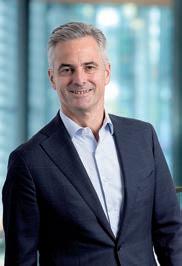
r ndrew mith has been appointed of the ictorian urriculum and ssessment uthority, commencing on une . r mith was previously of ducation ervices ustralia, stepping down in ay after eight years of service. e has a wealth of knowledge of the education sector, starting his career as a teacher and school leader in the Victorian government school system. ducation ervices ustralia’s current hief Technology fficer, r tuart itchell, will serve as cting while the board commences the search for its ne t .
Image: Education Services Australia




Retired principal joins Jobs Queensland Board s eirdre von uilleaume, a retired school principal with e tensive e perience in leadership, mentoring, coordination, and government, is oining a revitalised seven member obs ueensland Board in . The Board is tasked with strengthening the state’s skilled workforce. With more than two decades of teaching e perience, s uilleaume will provide a vital voice for education.
Image: Queensland Government



Perth suburb’s new school
Ms Vanessa Blythe has been appointed Foundation Principal of Eglinton Beach Primary School in Perth. The first school in the northern suburb of glinton, with capacity for 620 students from kindergarten to year , opened in ebruary . The inclusive school has an integrated Education Support program for students with disabilities. s Blythe was previously rincipal at pringfield rimary chool in allaroo for five years.
Image: Eglinton Beach Primary School




Experienced principal joins new state-of-the-art
s nika Blackmore has been appointed oundation Principal of Maarakool Primary School in Brabham in , that will accommodate up to students from kindergarten to year 6. Ms Blackmore began her career in public education 17 years ago as a teacher in the Pilbara. She has been an administrator for 11 years and was most recently the Foundation Principal at Brabham Primary School.
Image: Maarakool Primary School

Primary teacher brings sporting experience to sport
s lla abl ak, ustralian aralympian and world champion with more than years in elite sport at an international level, has been appointed to the dvisory Board for ueensland cademy of port. s abl ak is a primary school teacher at ac illop ollege in erribee, with a passion for positive mental health and wellbeing. She is also a founding member of the International heelchair Basketball ederation thlete teering ommittee, as well as recently being appointed to aralympics ustralia’s thlete ommission.
Image: Queensland Government
If you’d like to tell the sector about a new person in your school, company, institute or not-for-profit, please send the person’s name, position, image and a short description about their role to editor Rhiannon Bowman for consideration at rhiannon.bowman@primecreative.com.au.


Thankyouforthe learning,thecollegiality, the discussions and insights.










A privilege to pull back for two days, hear speakersinspiring and network with other teachers.

The conference revitalised my love of teaching. A highlight was the diverse presentationsschool and the quality of the research. I

8-9











